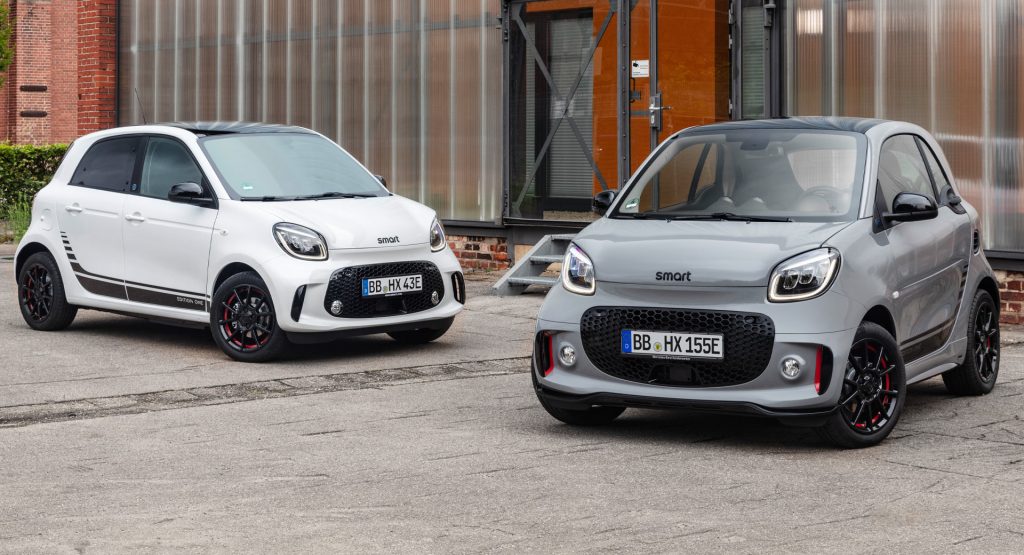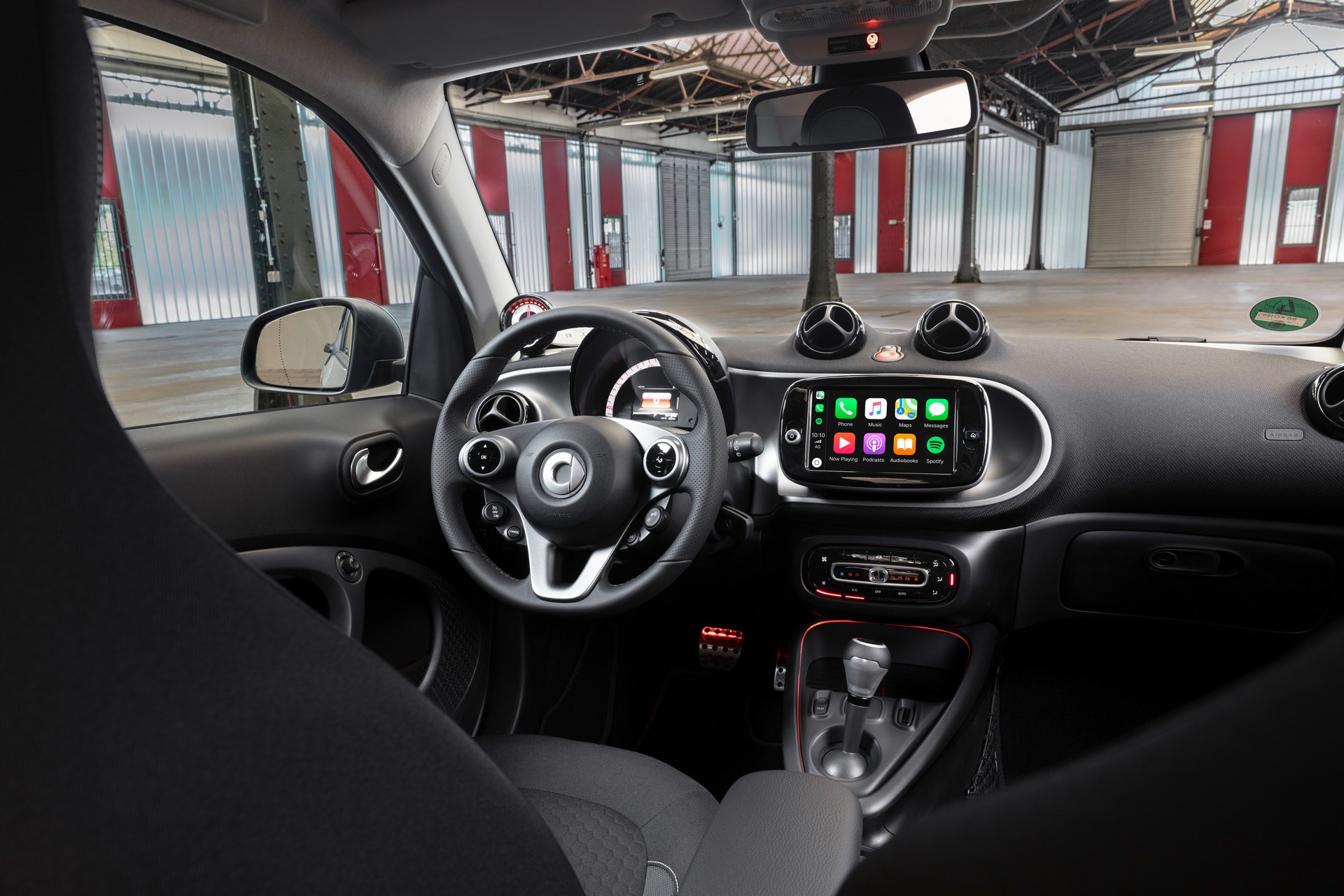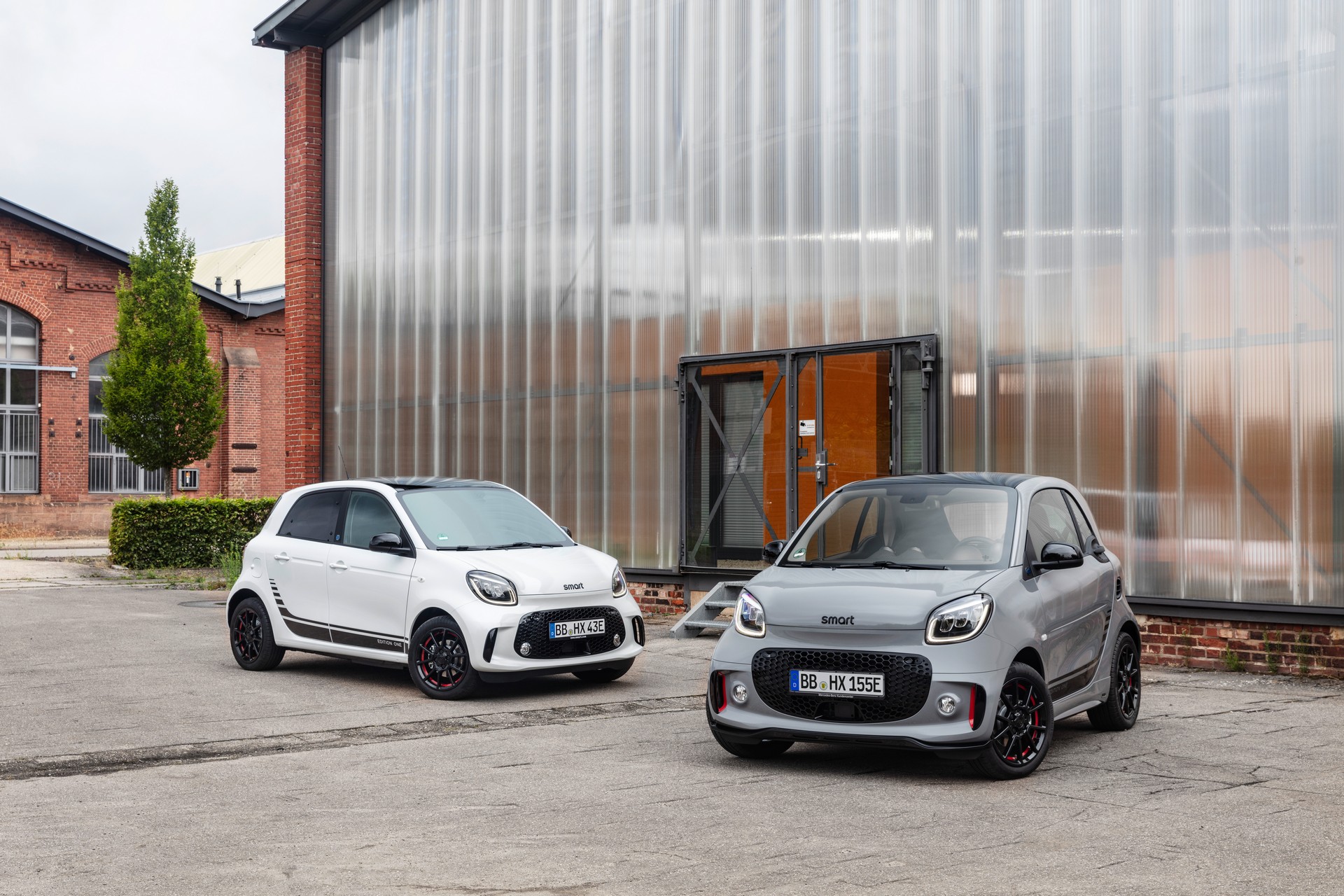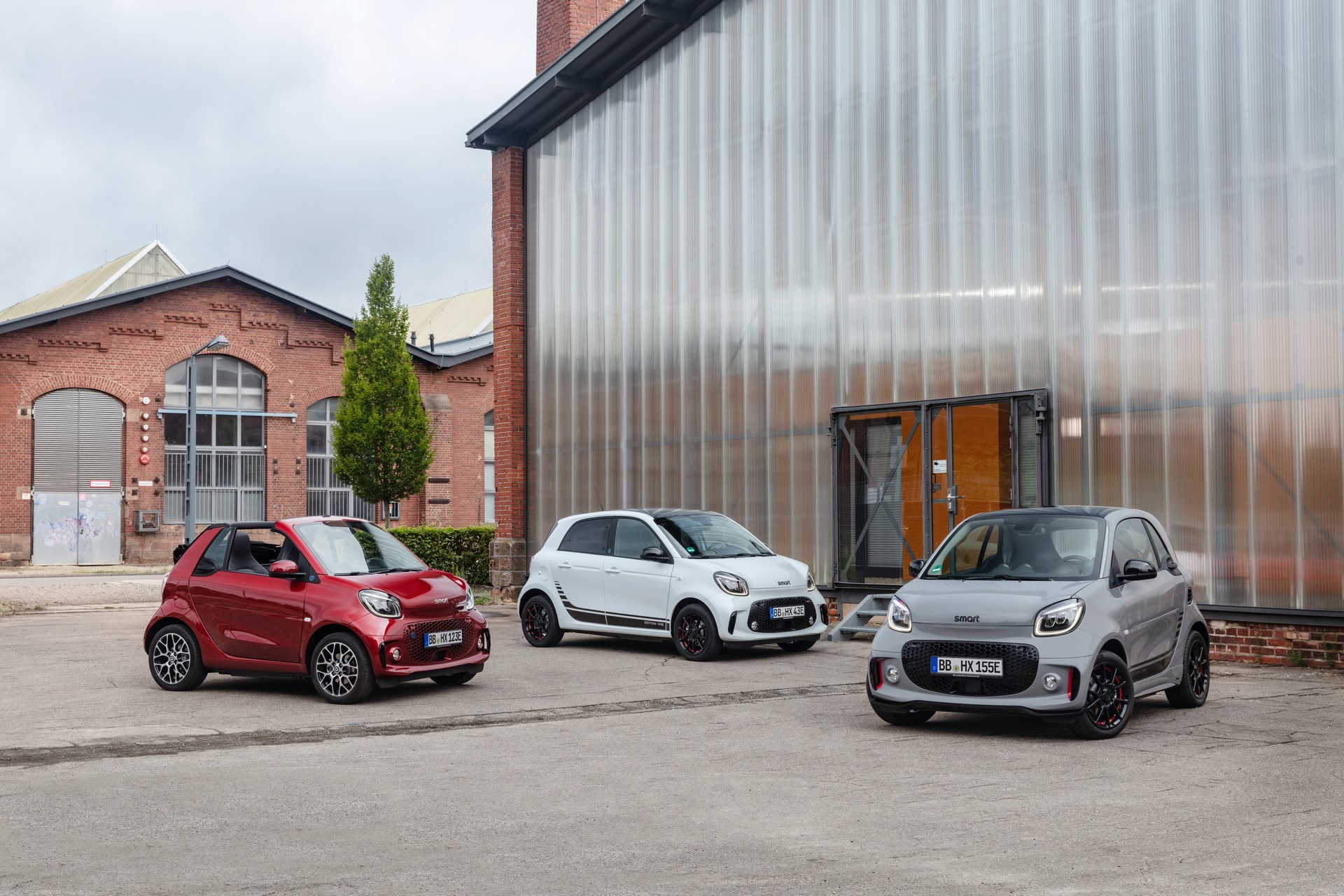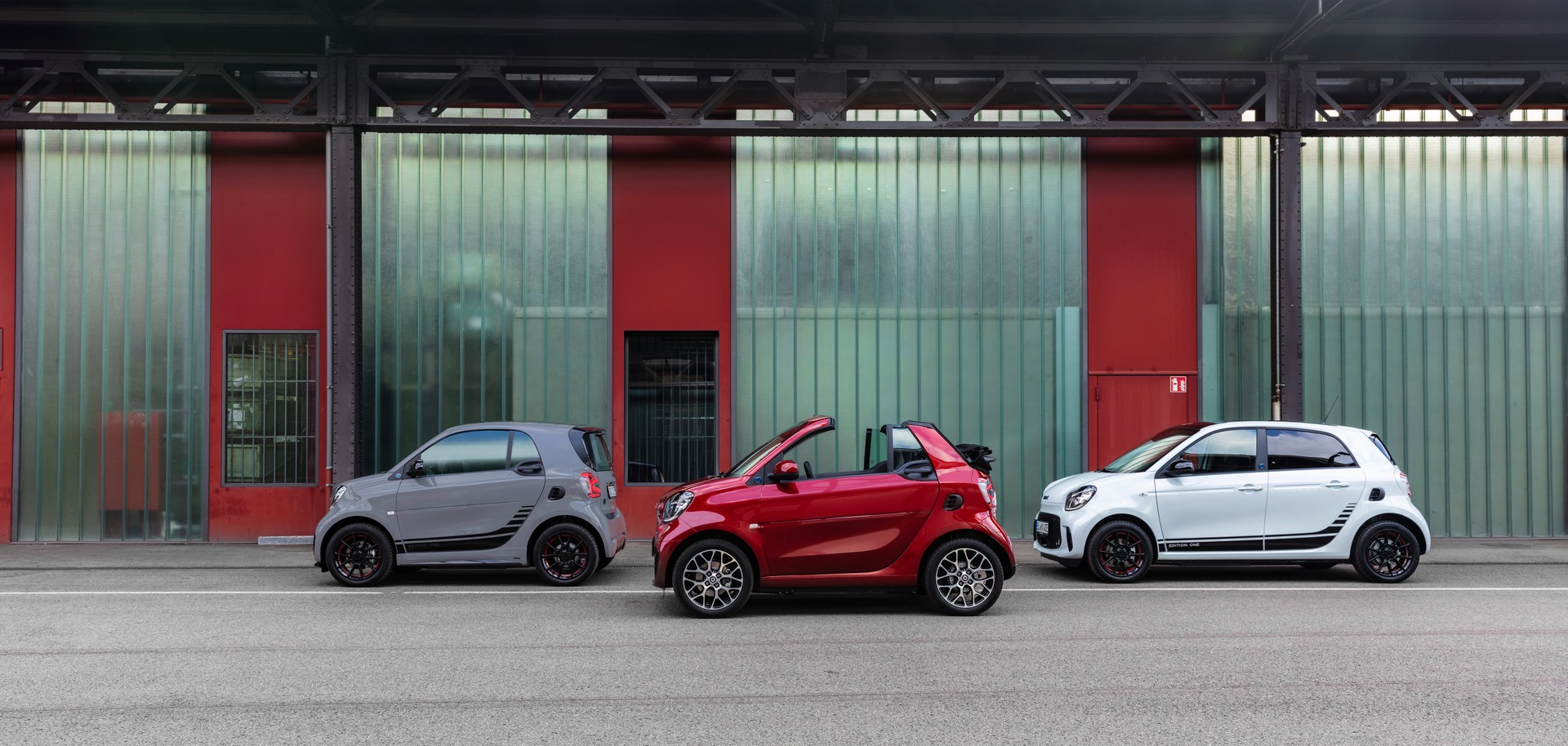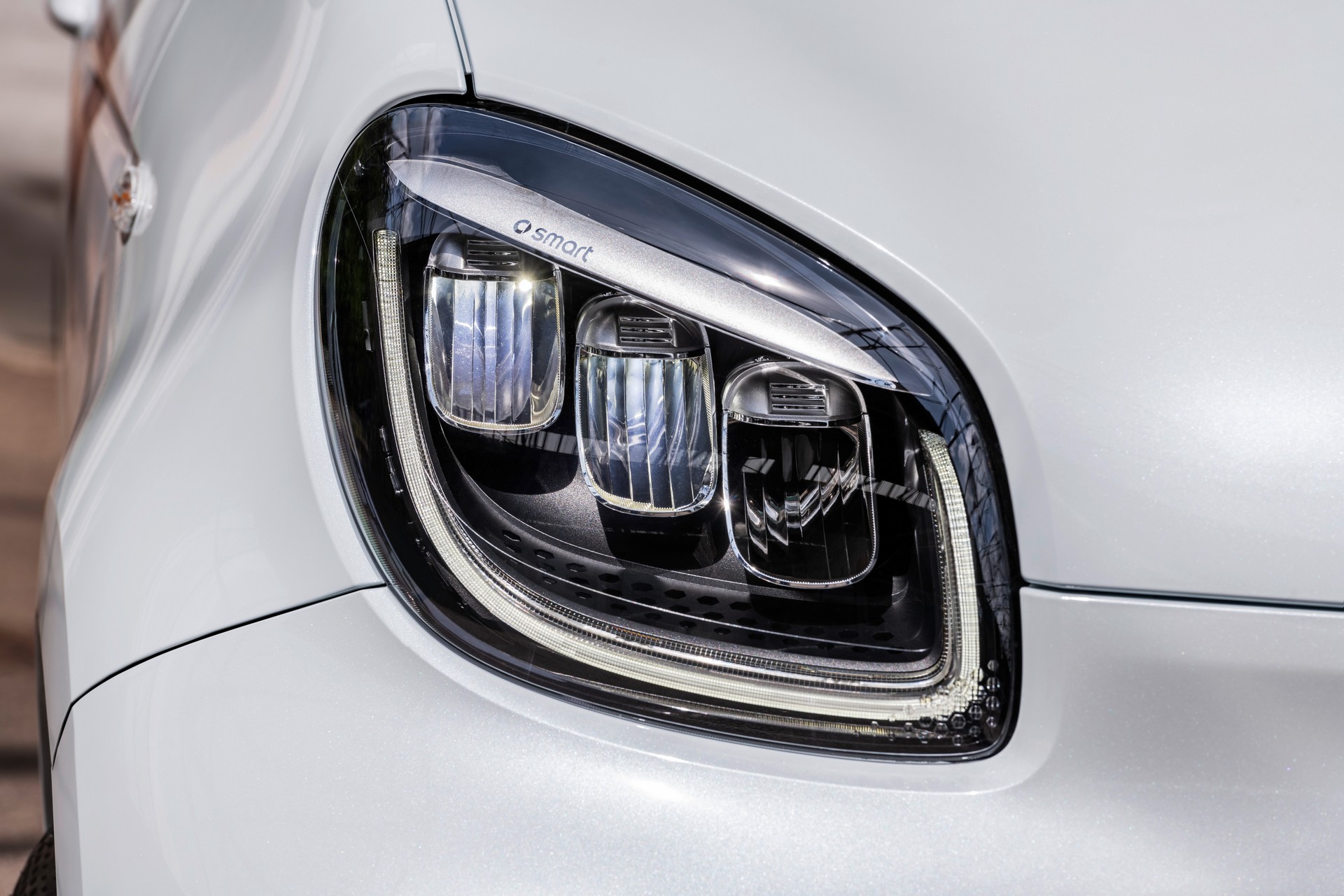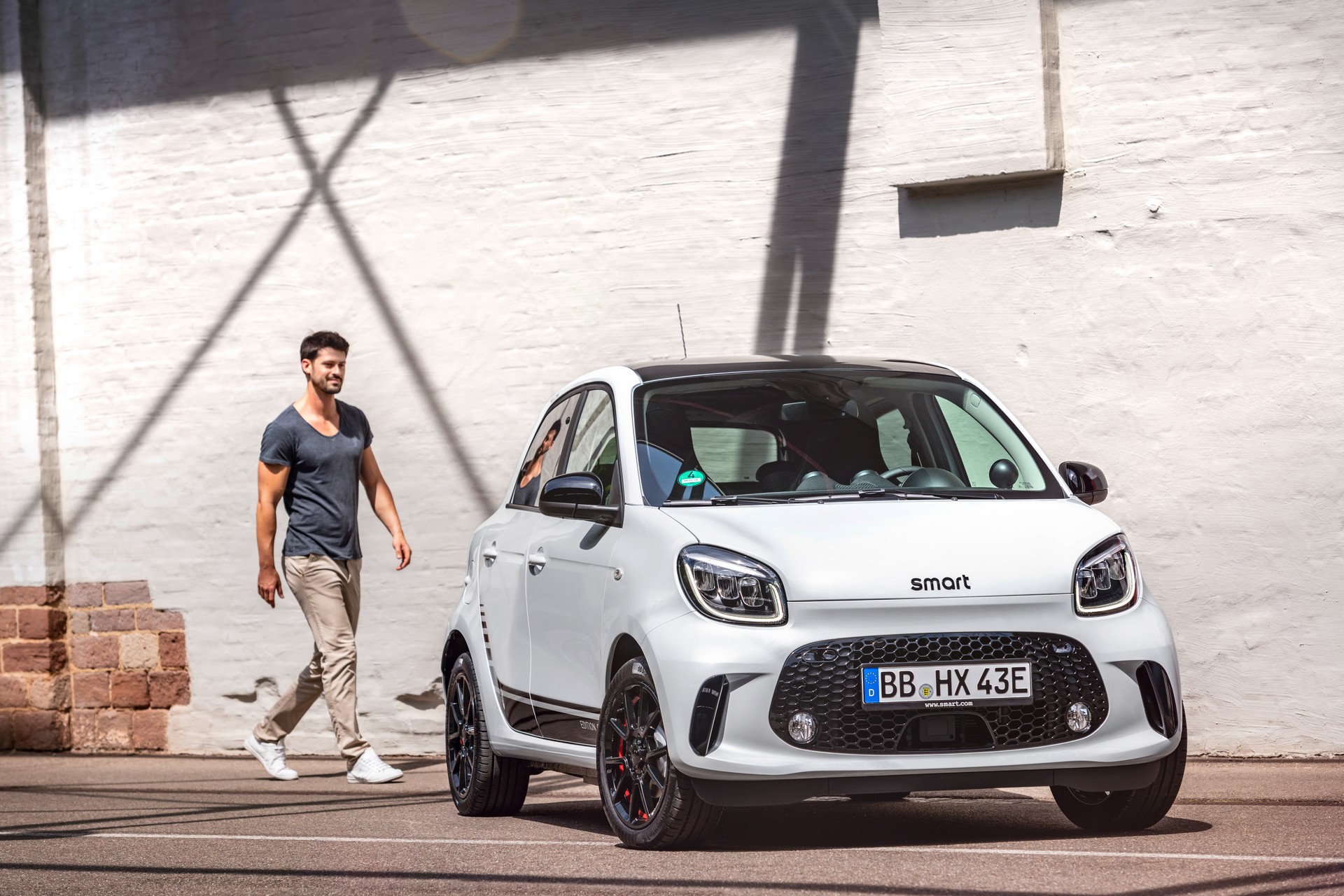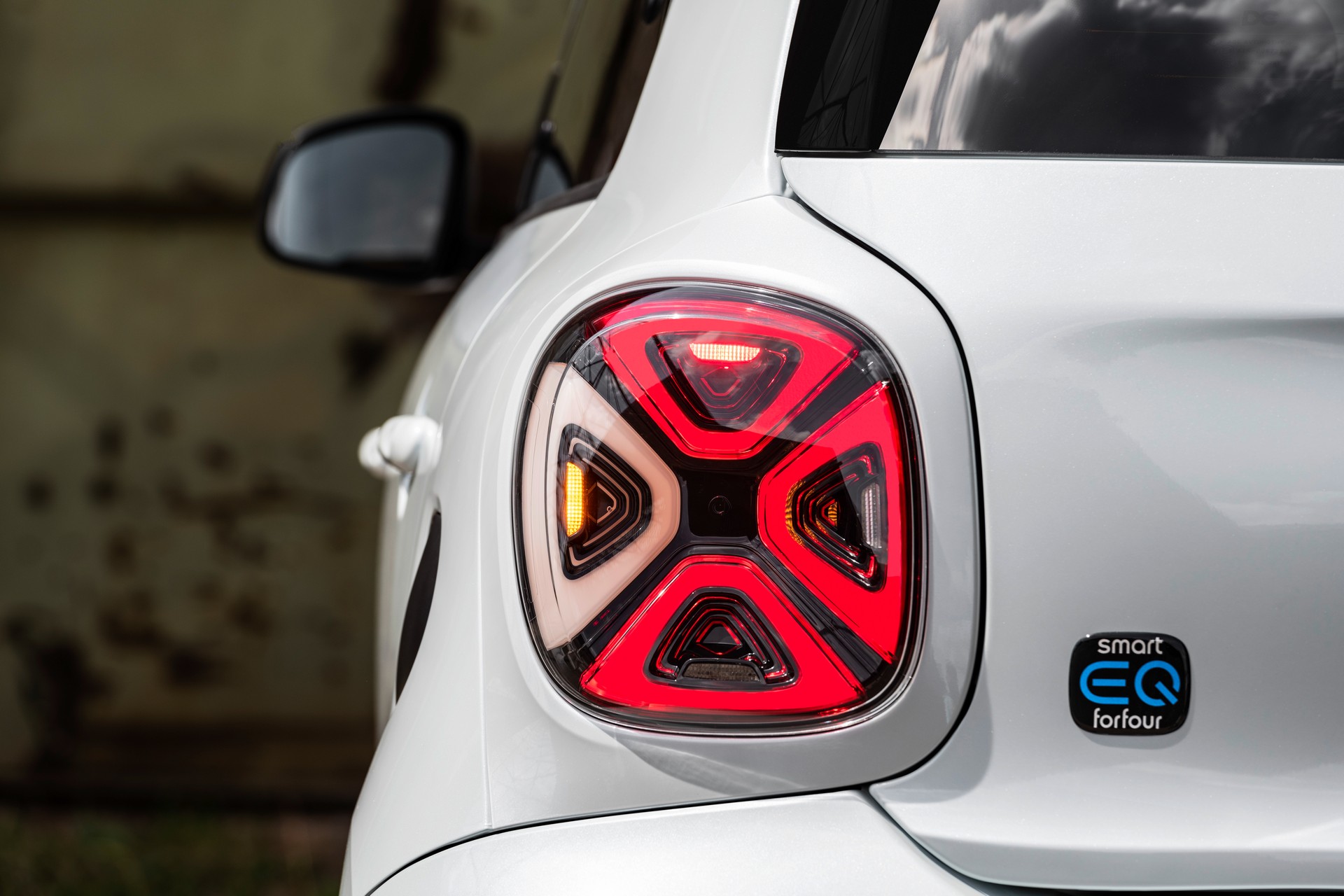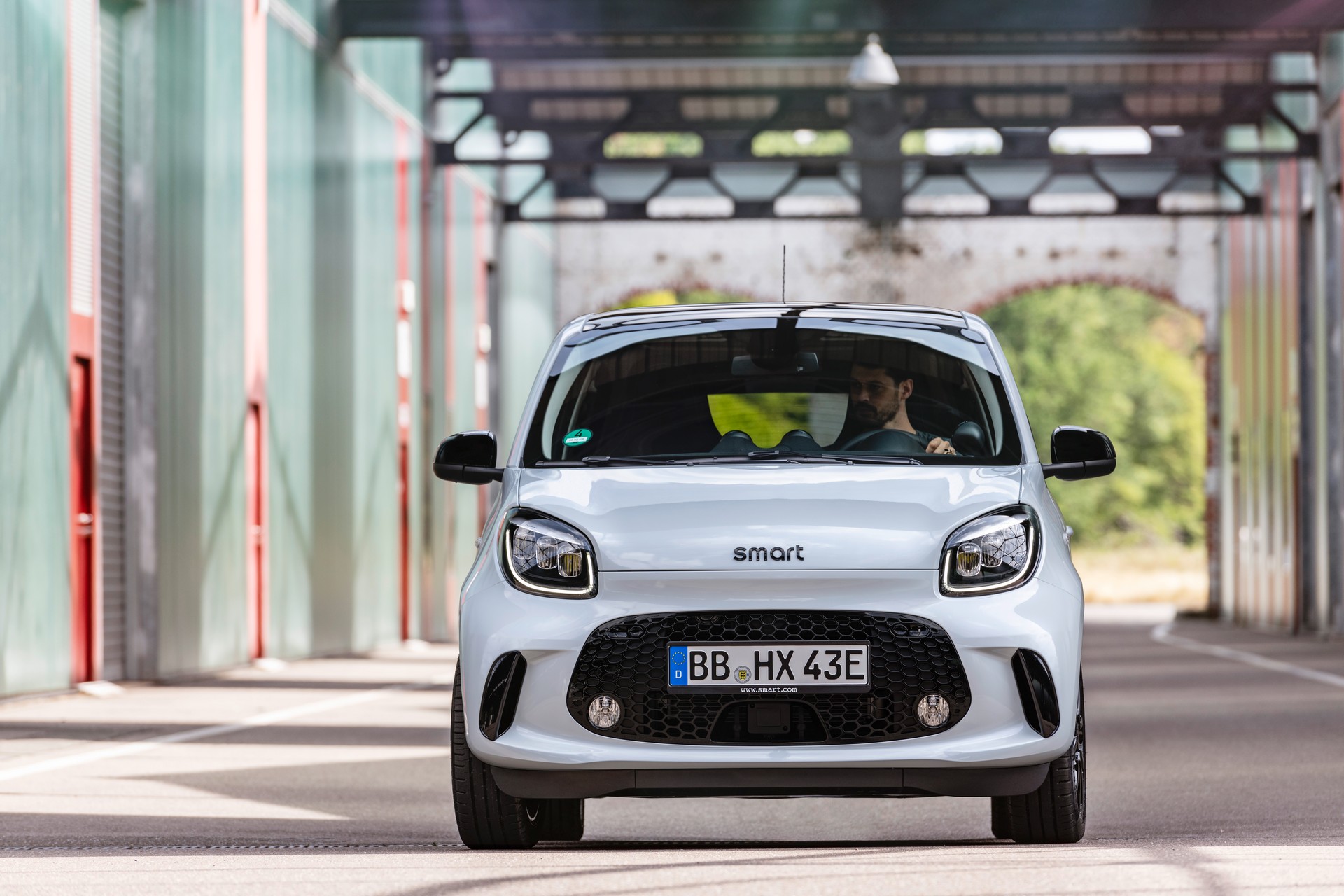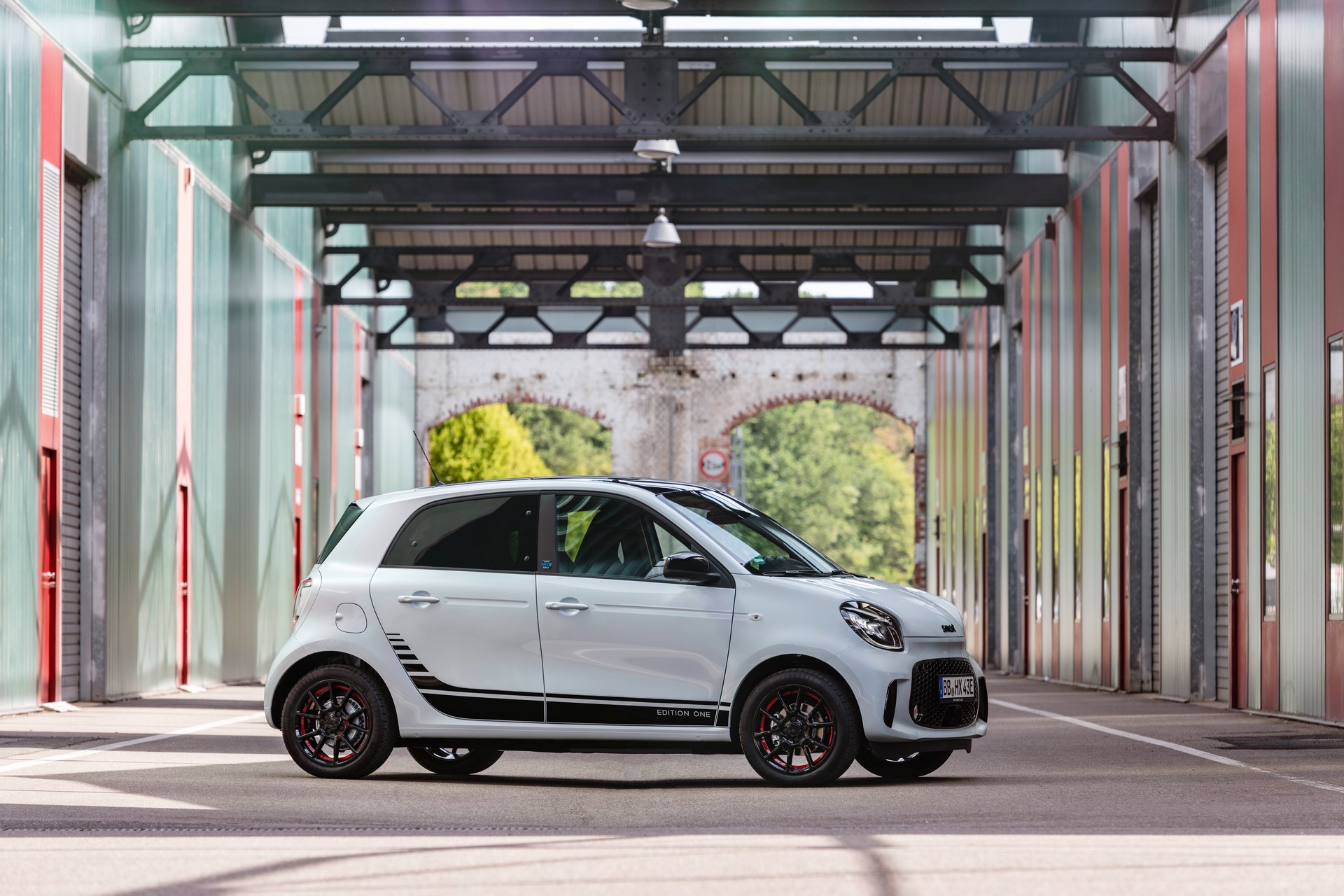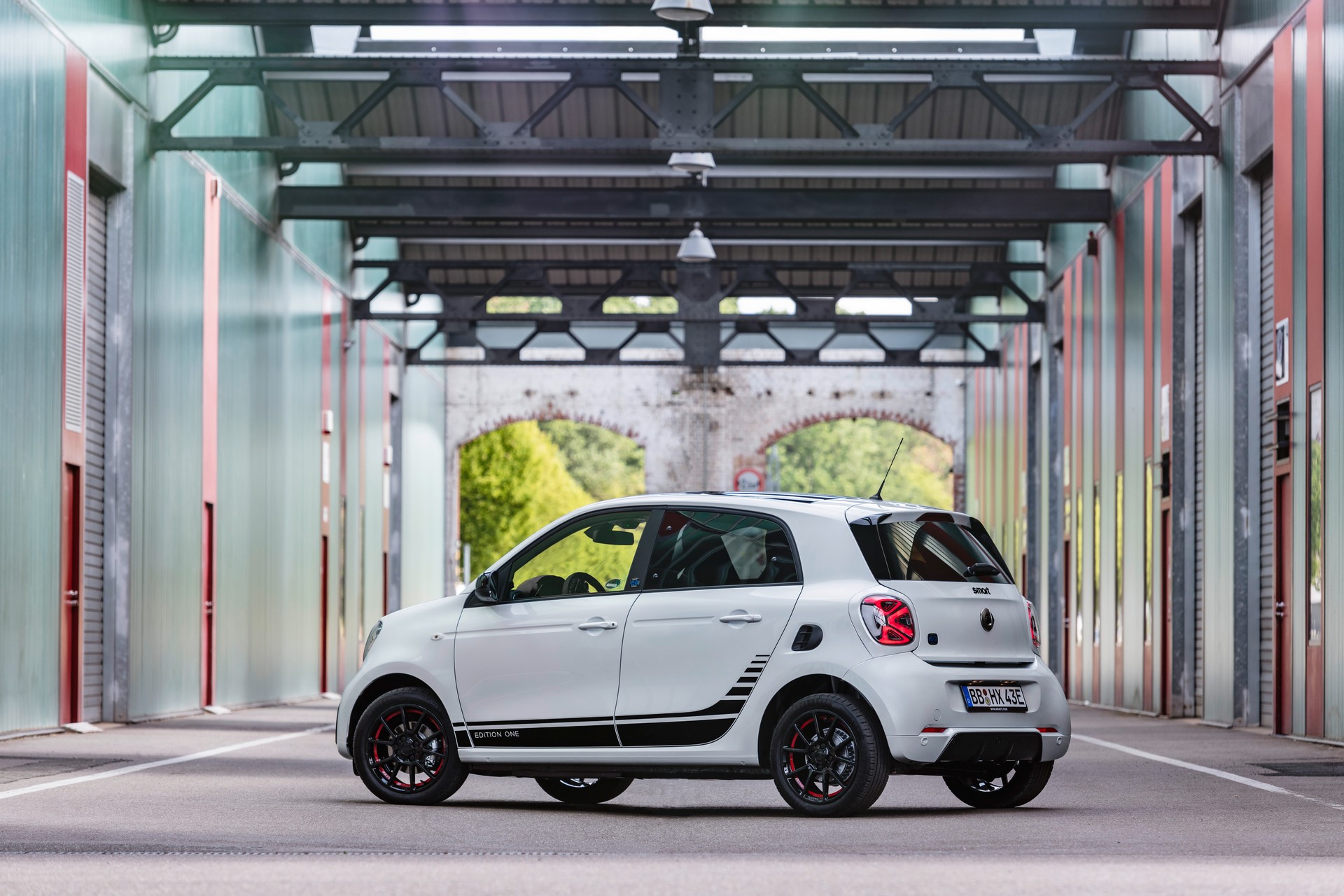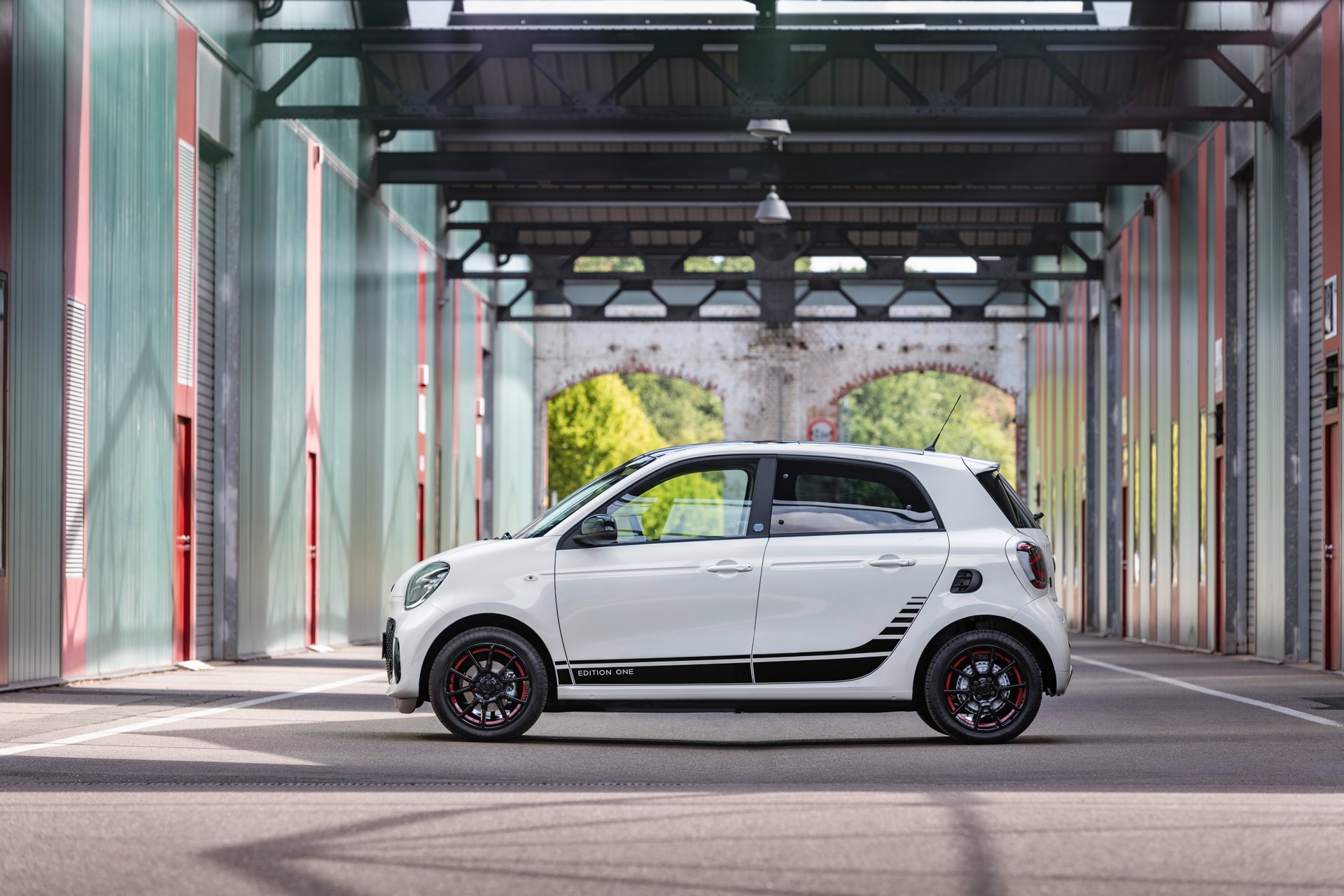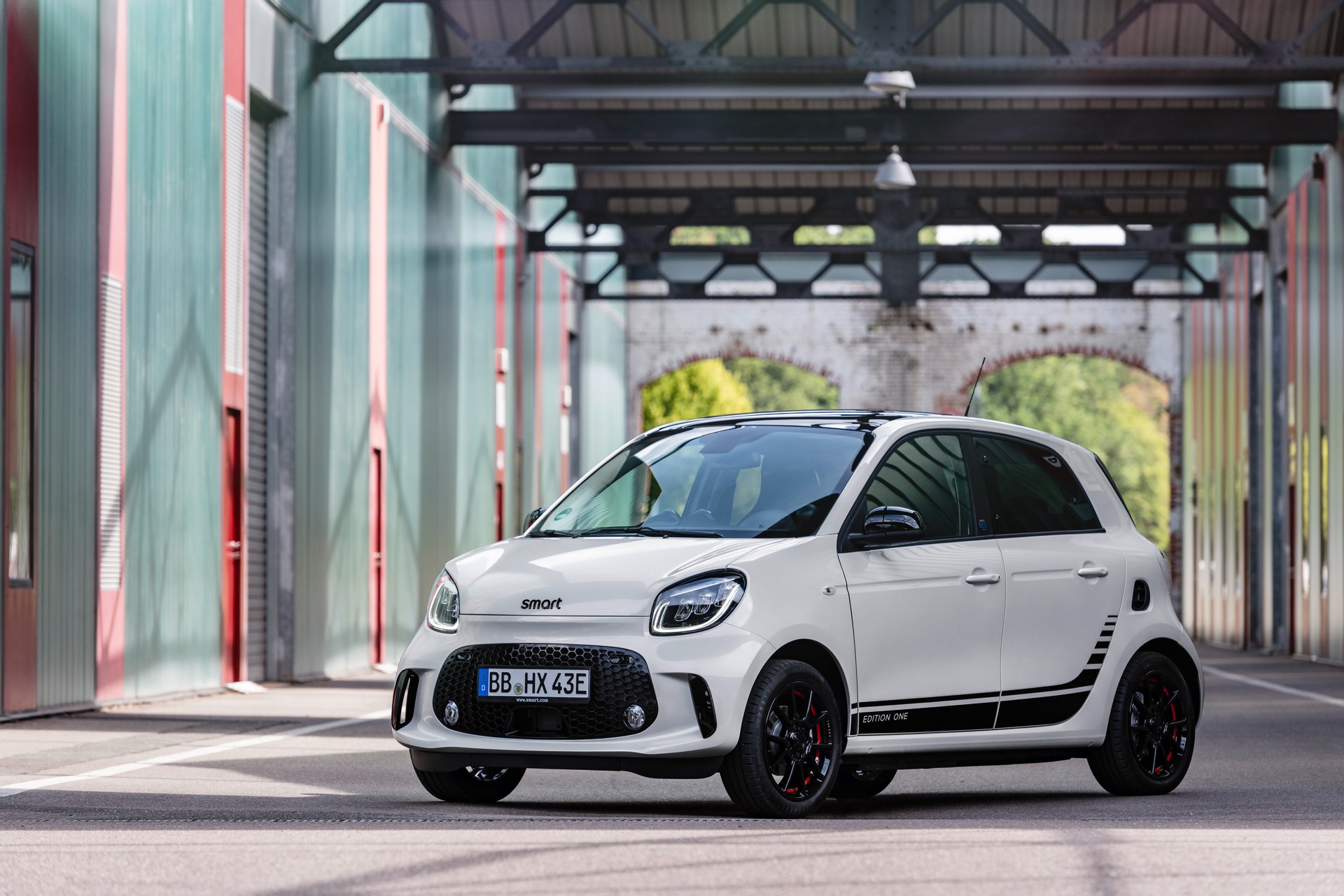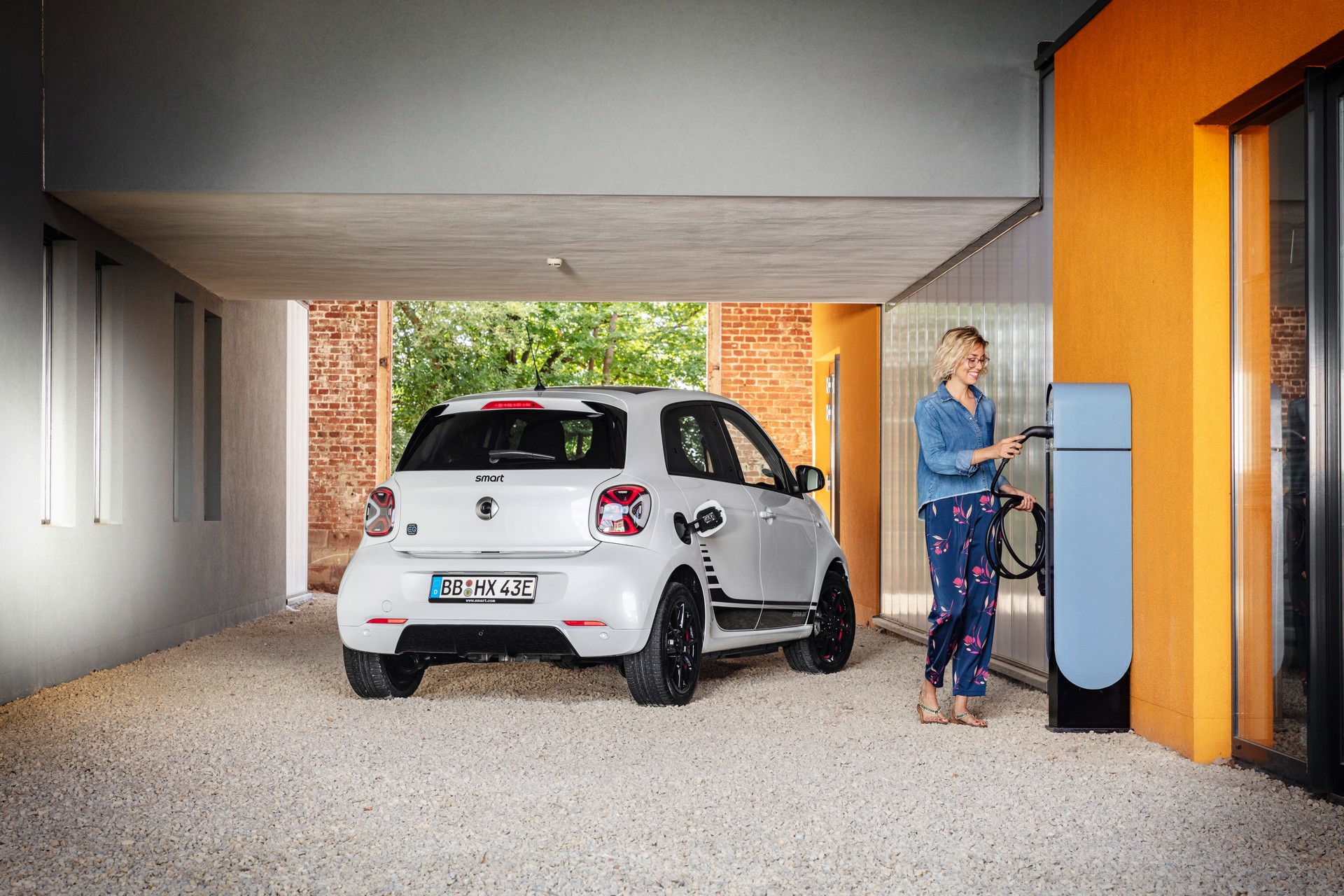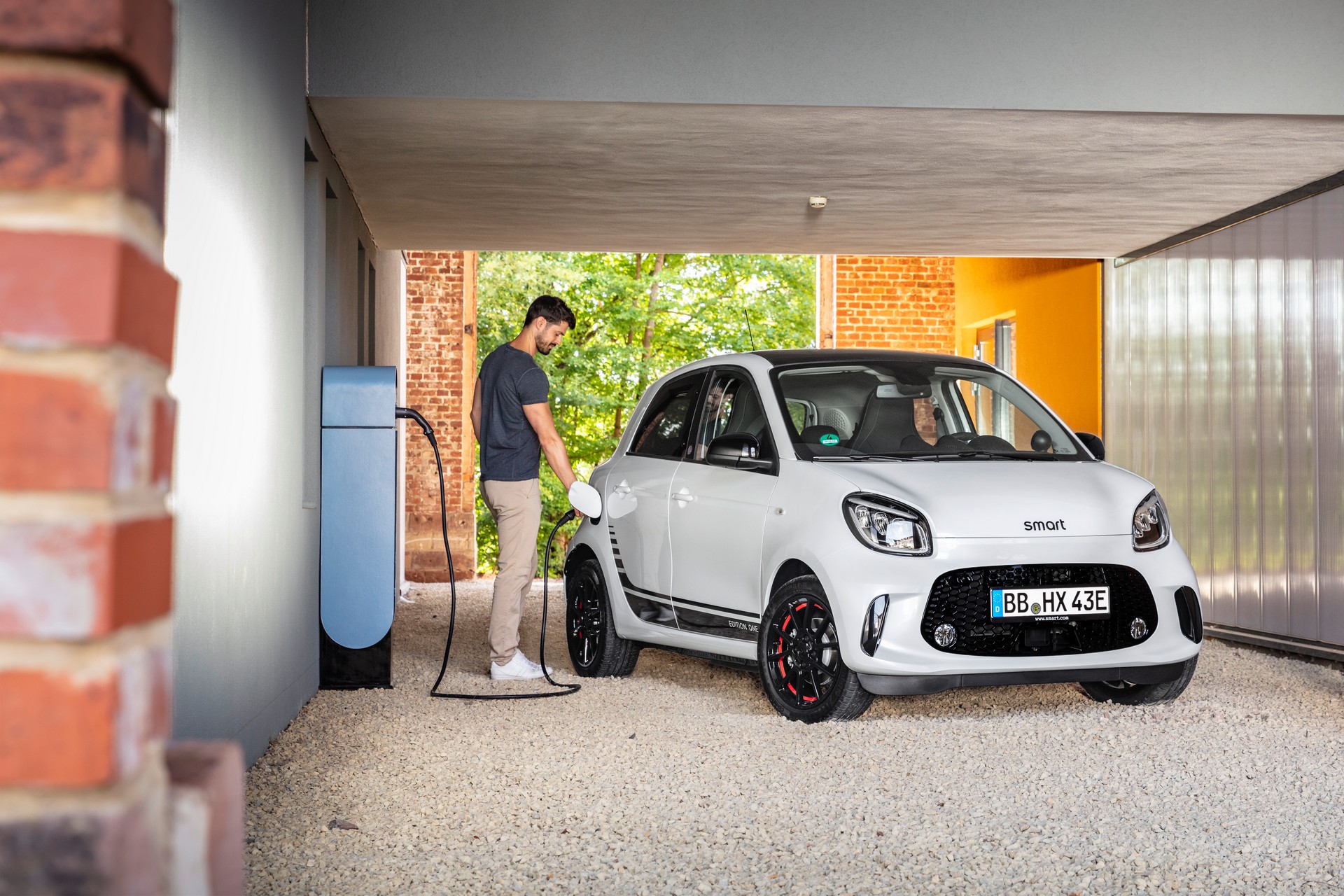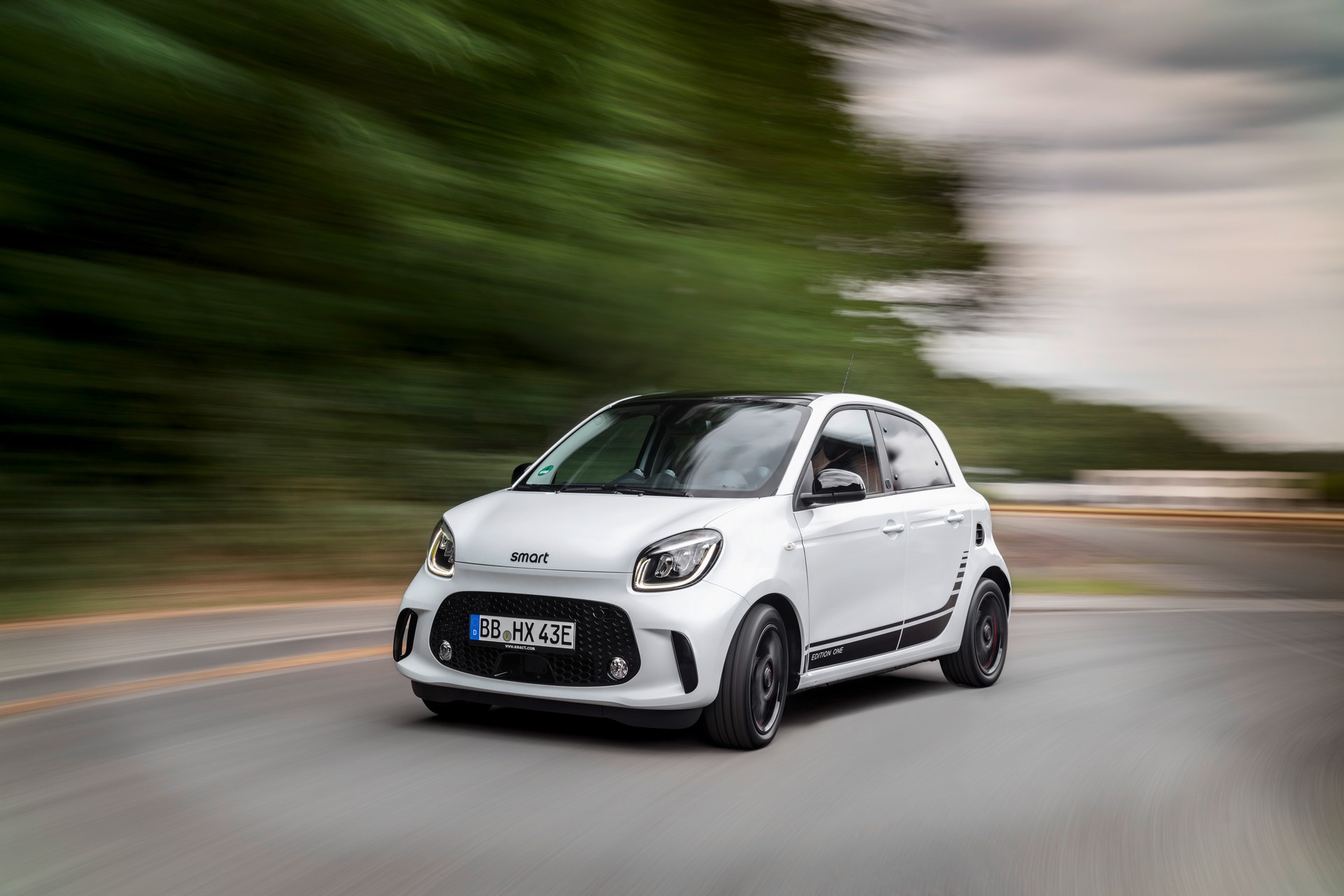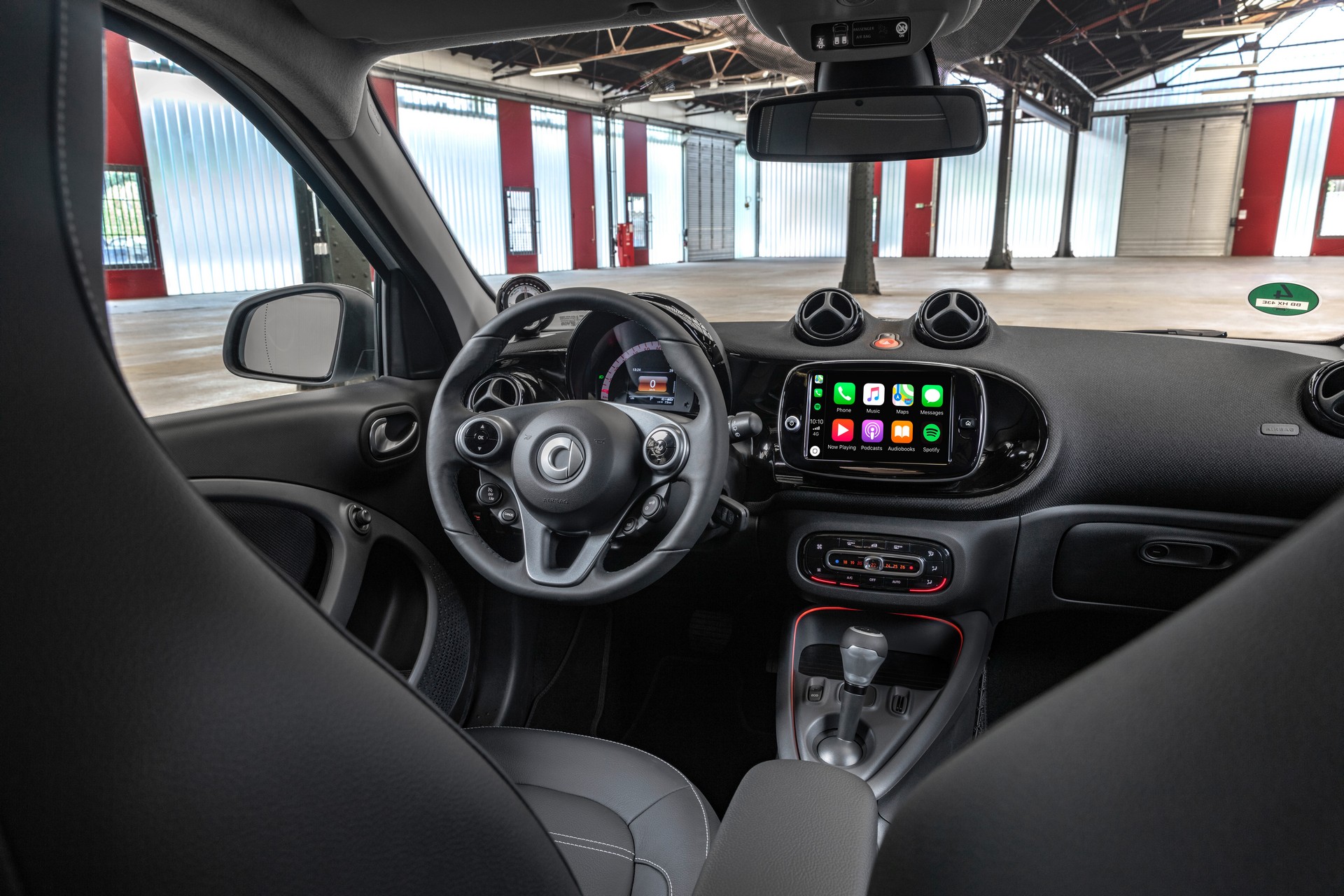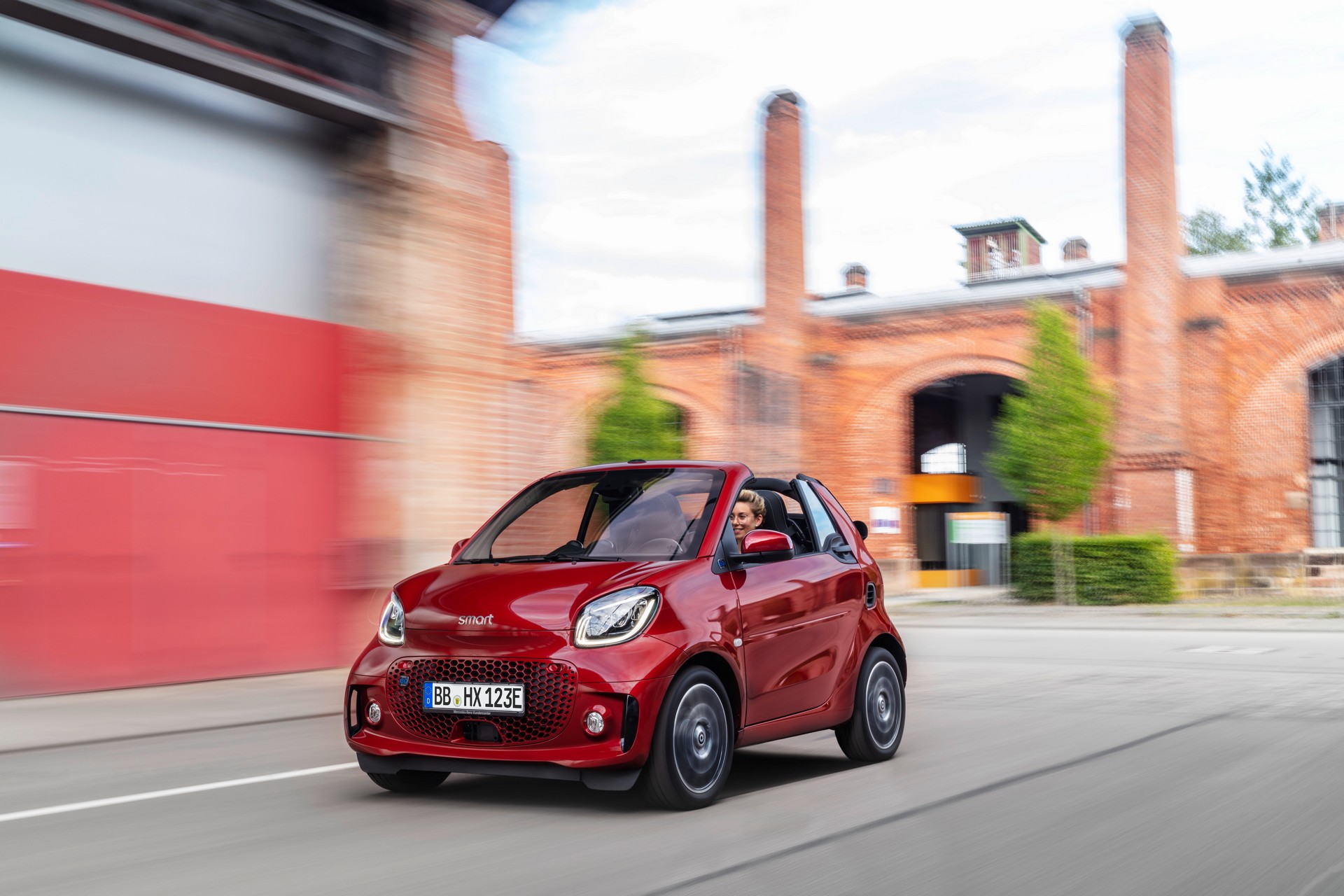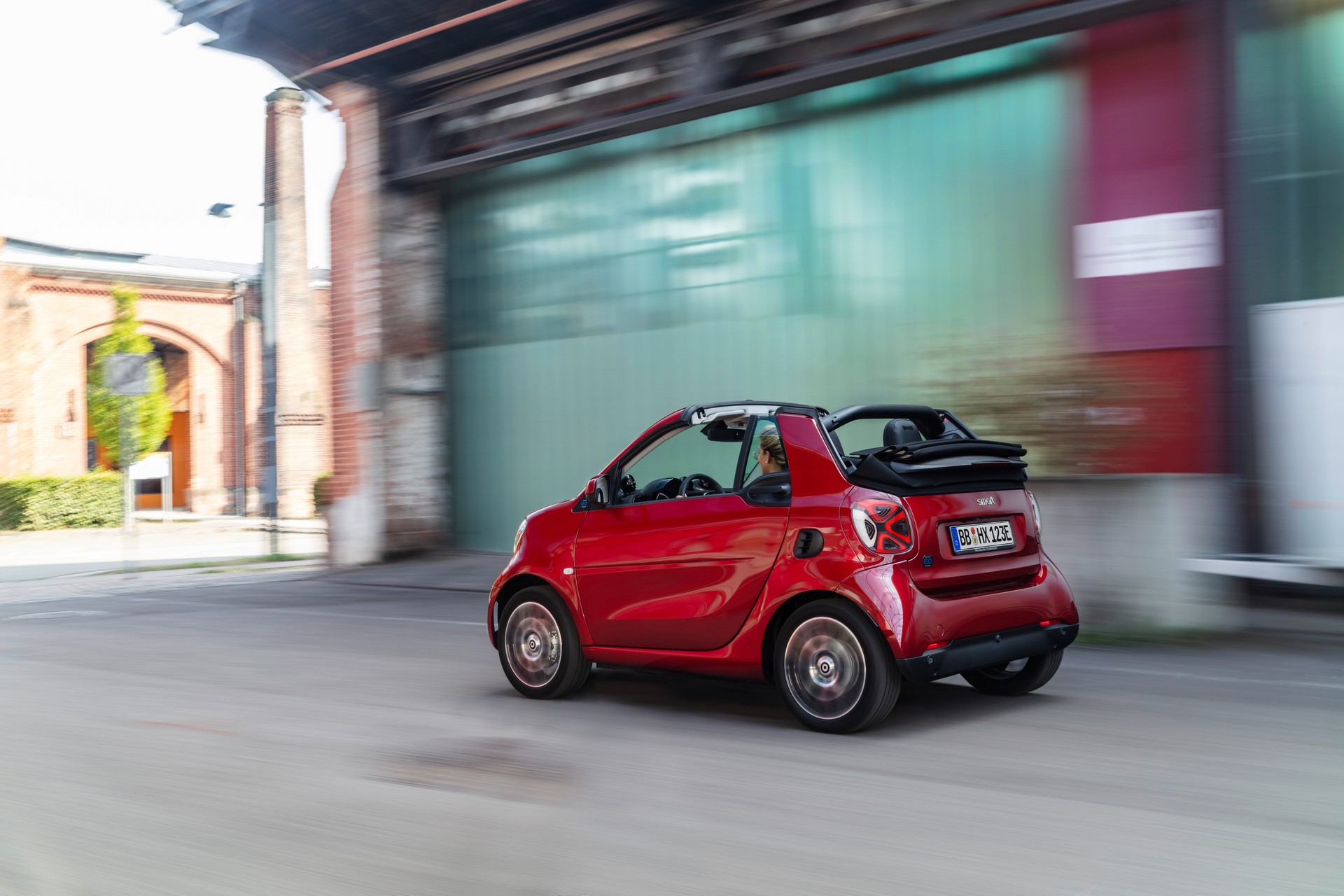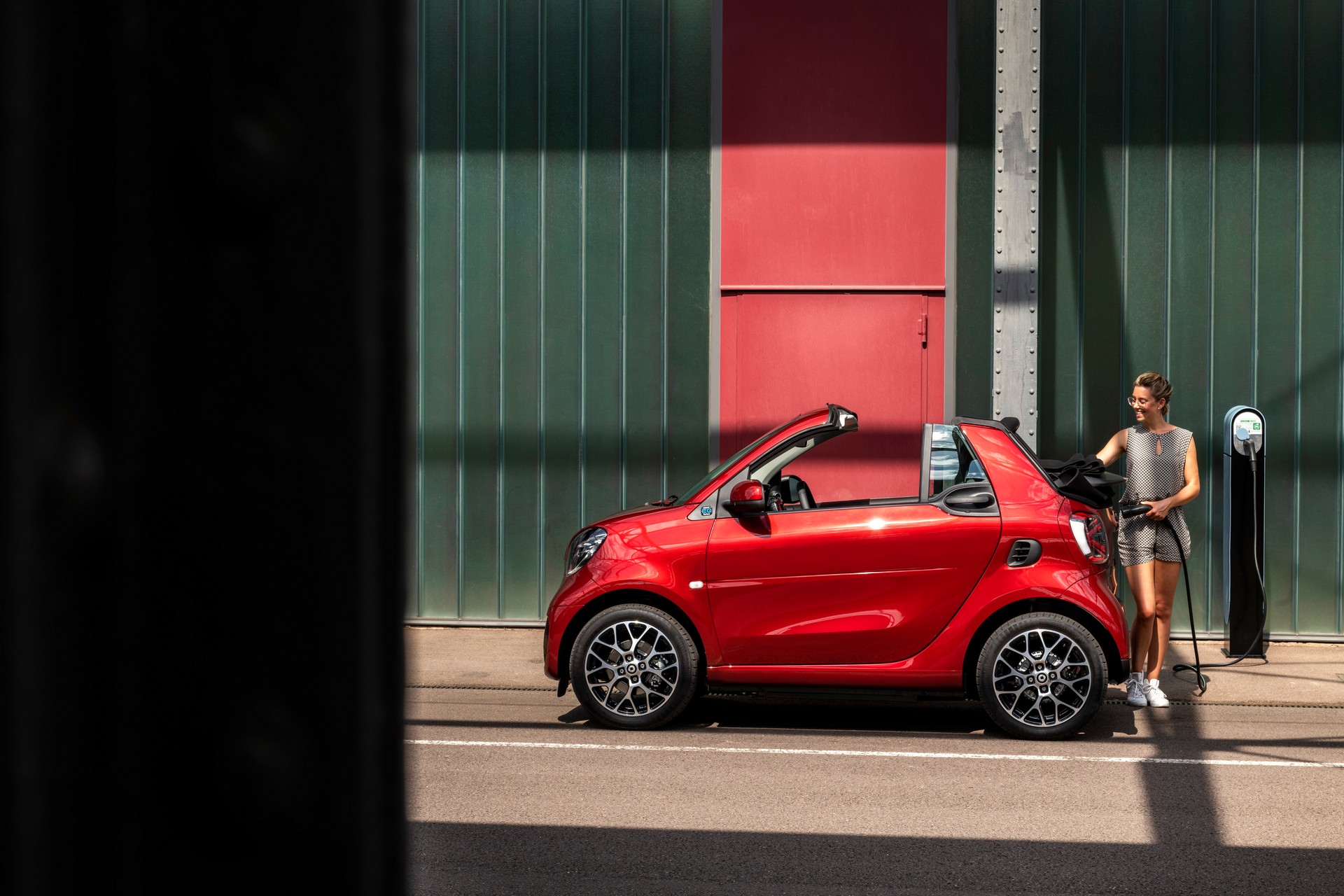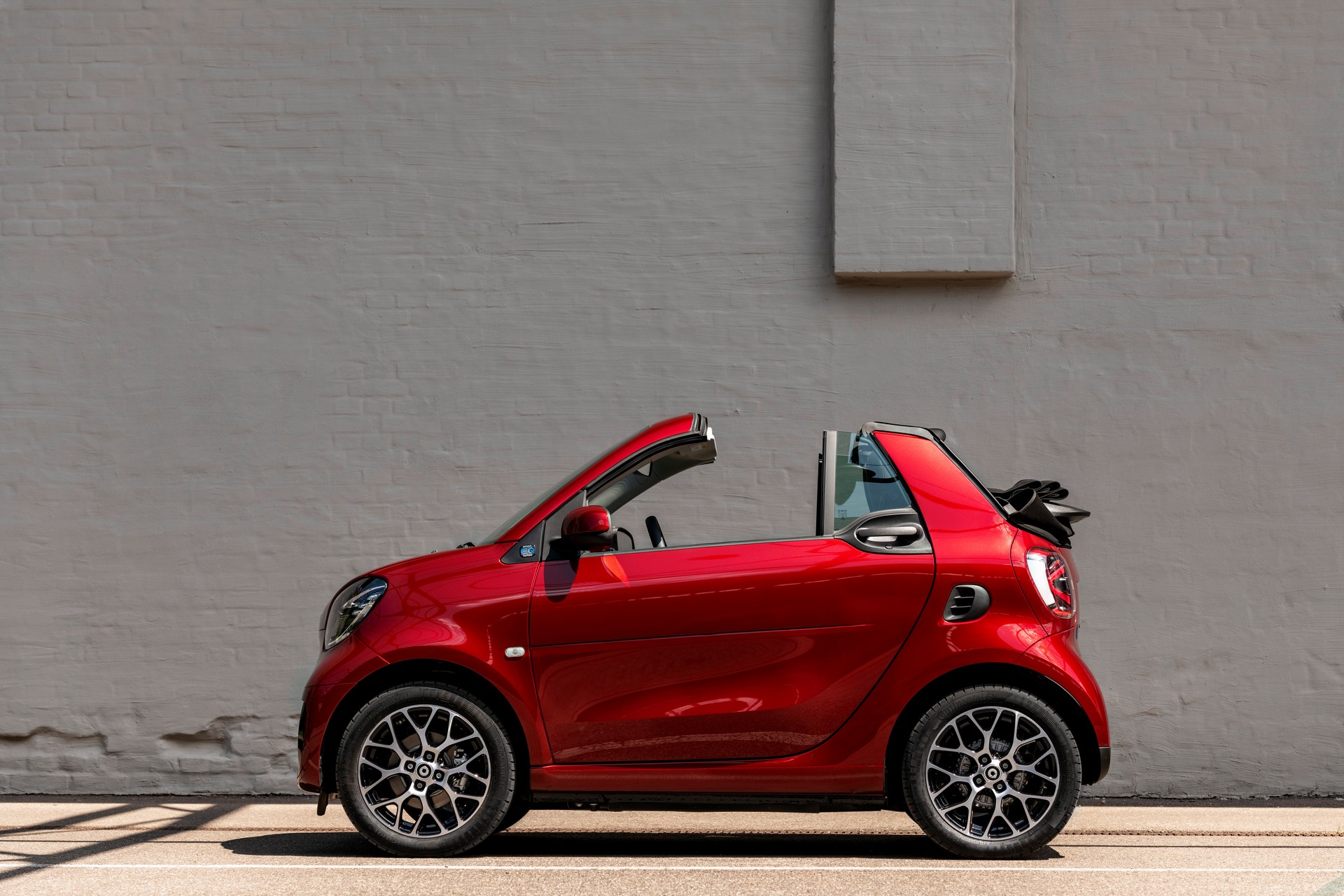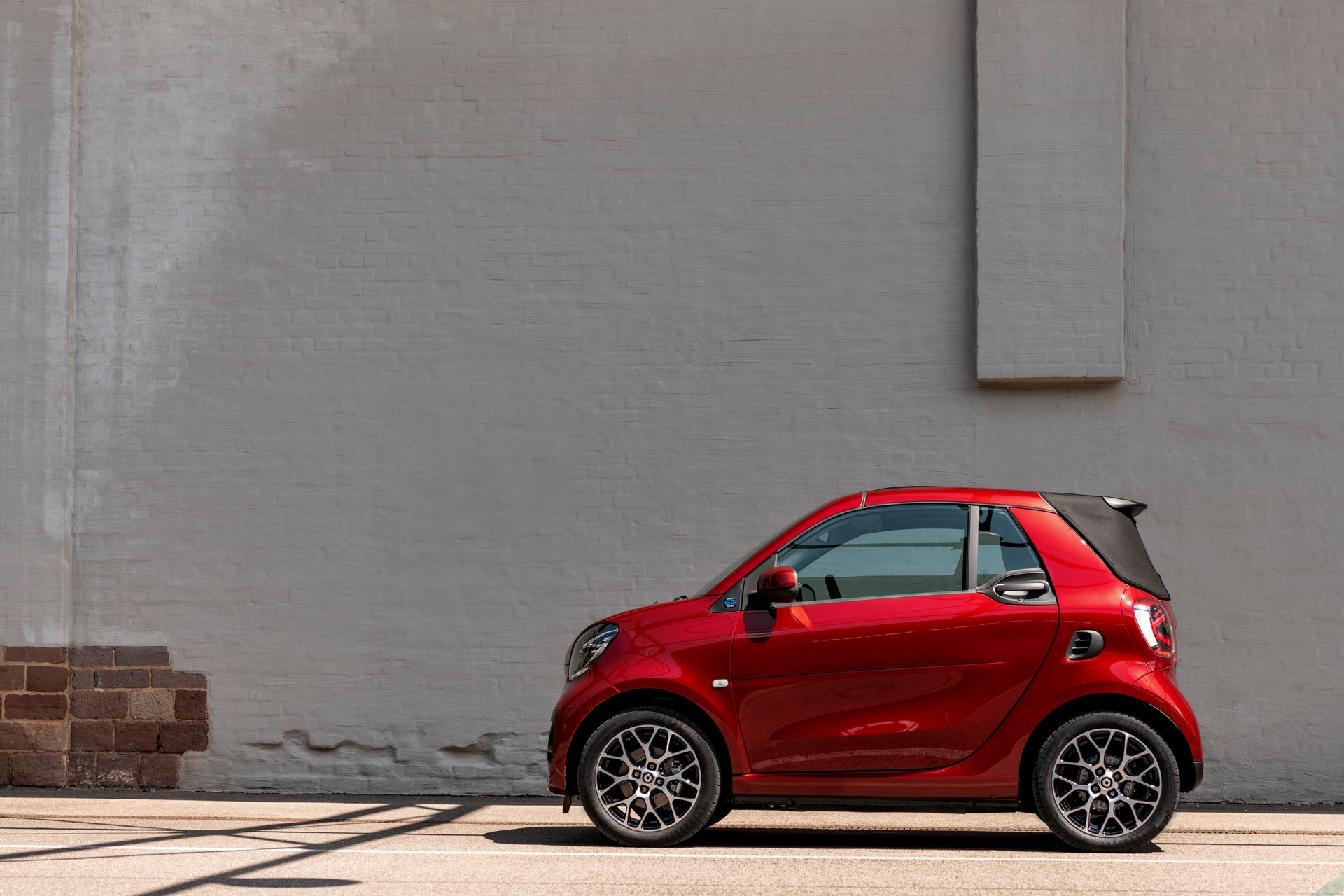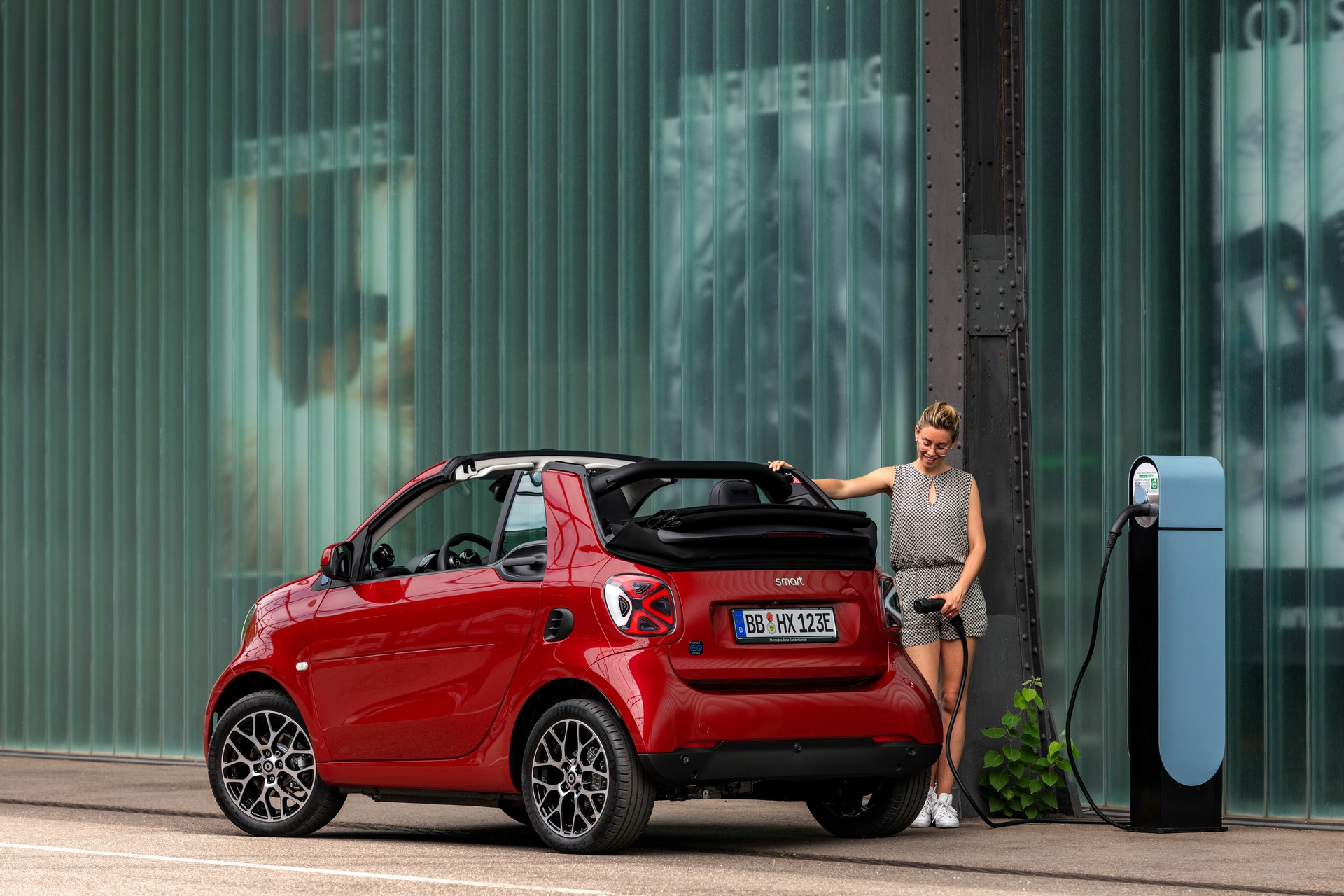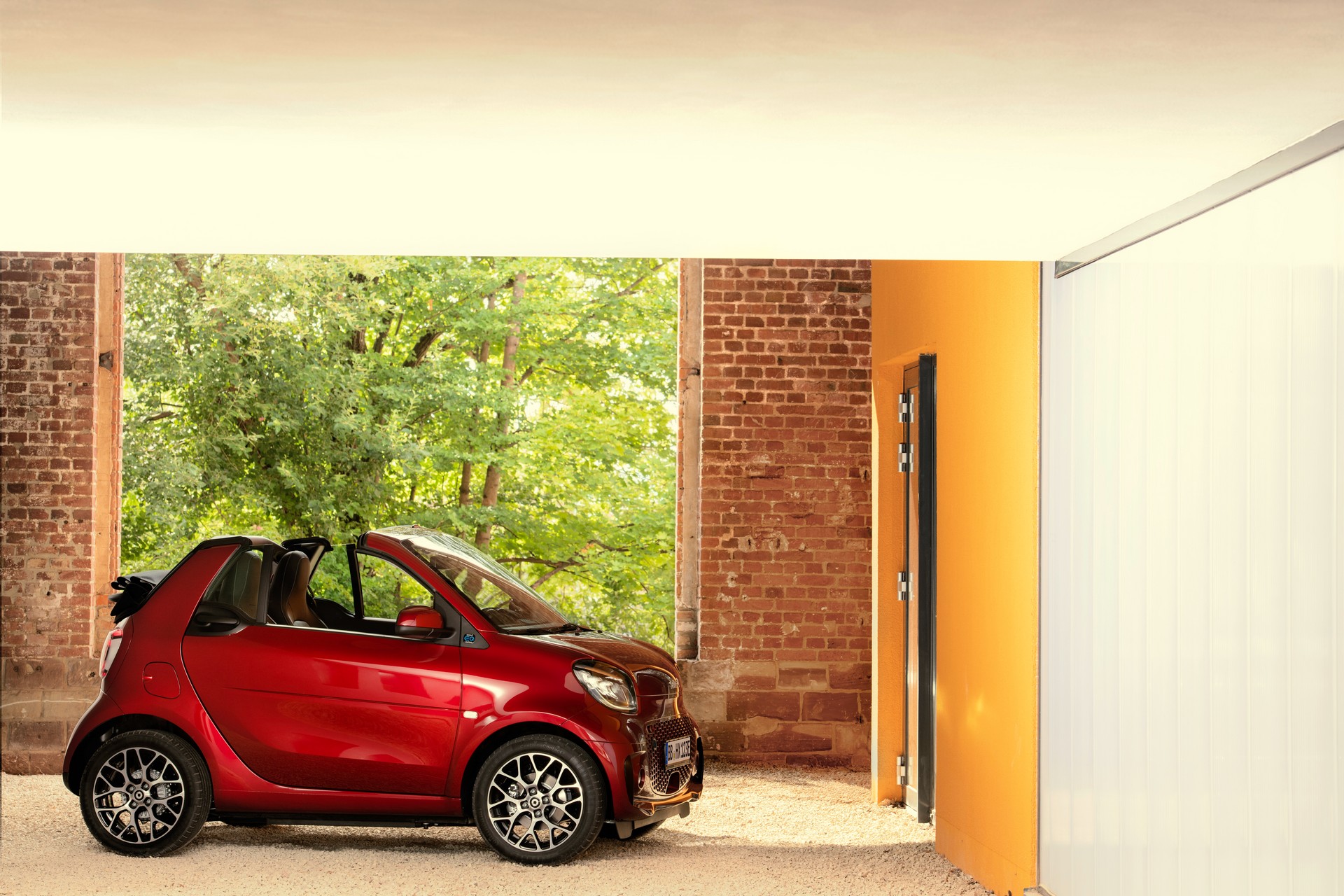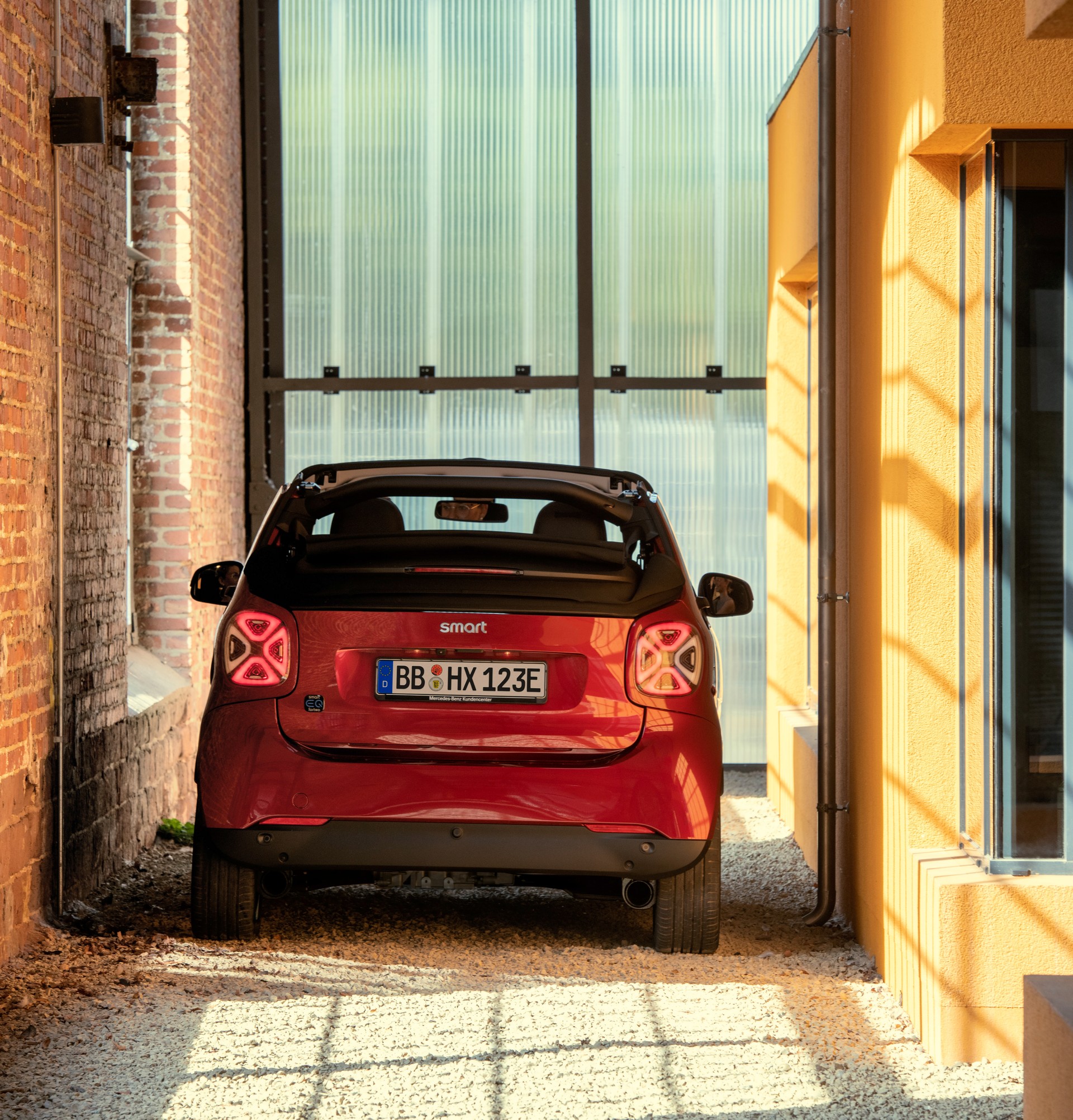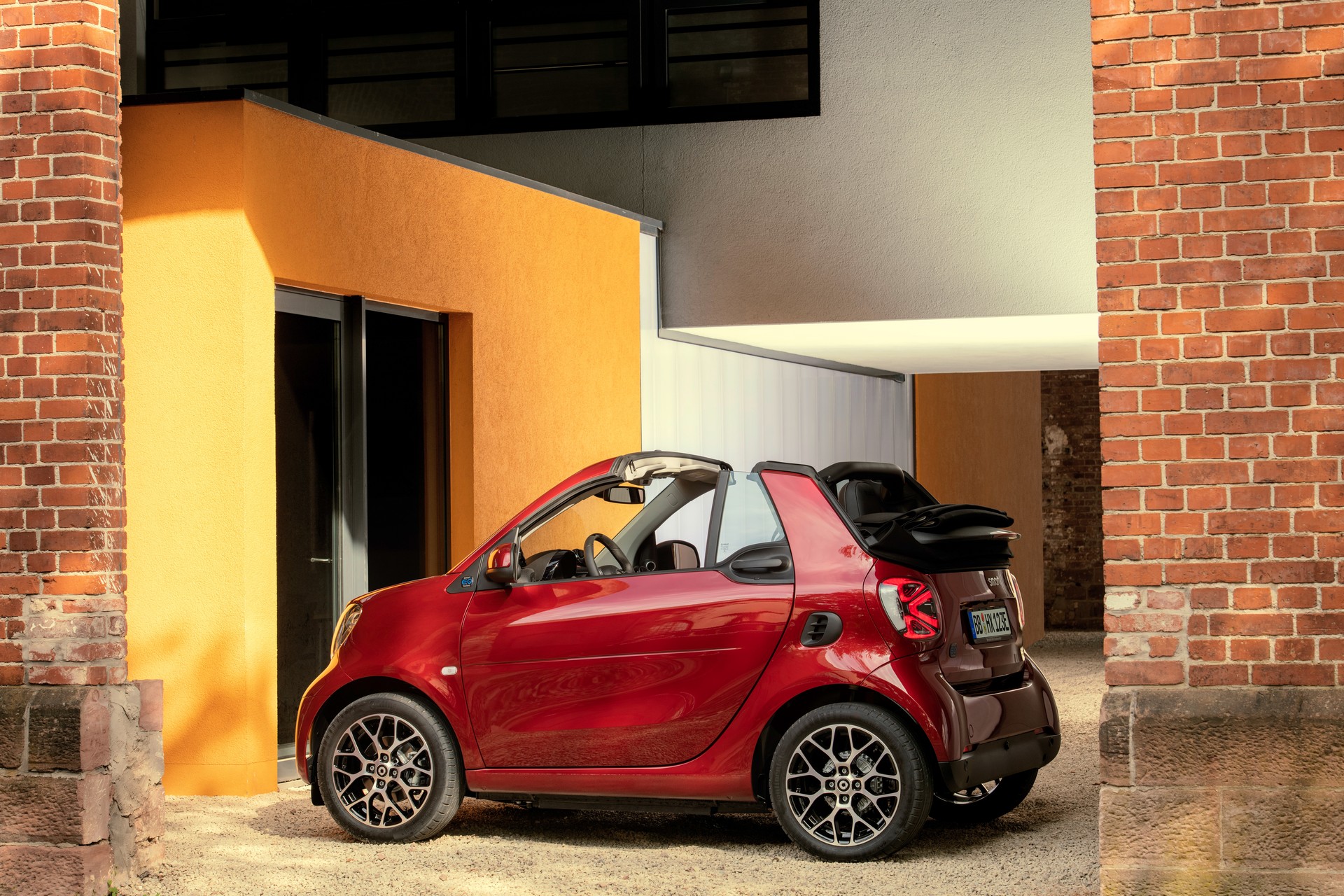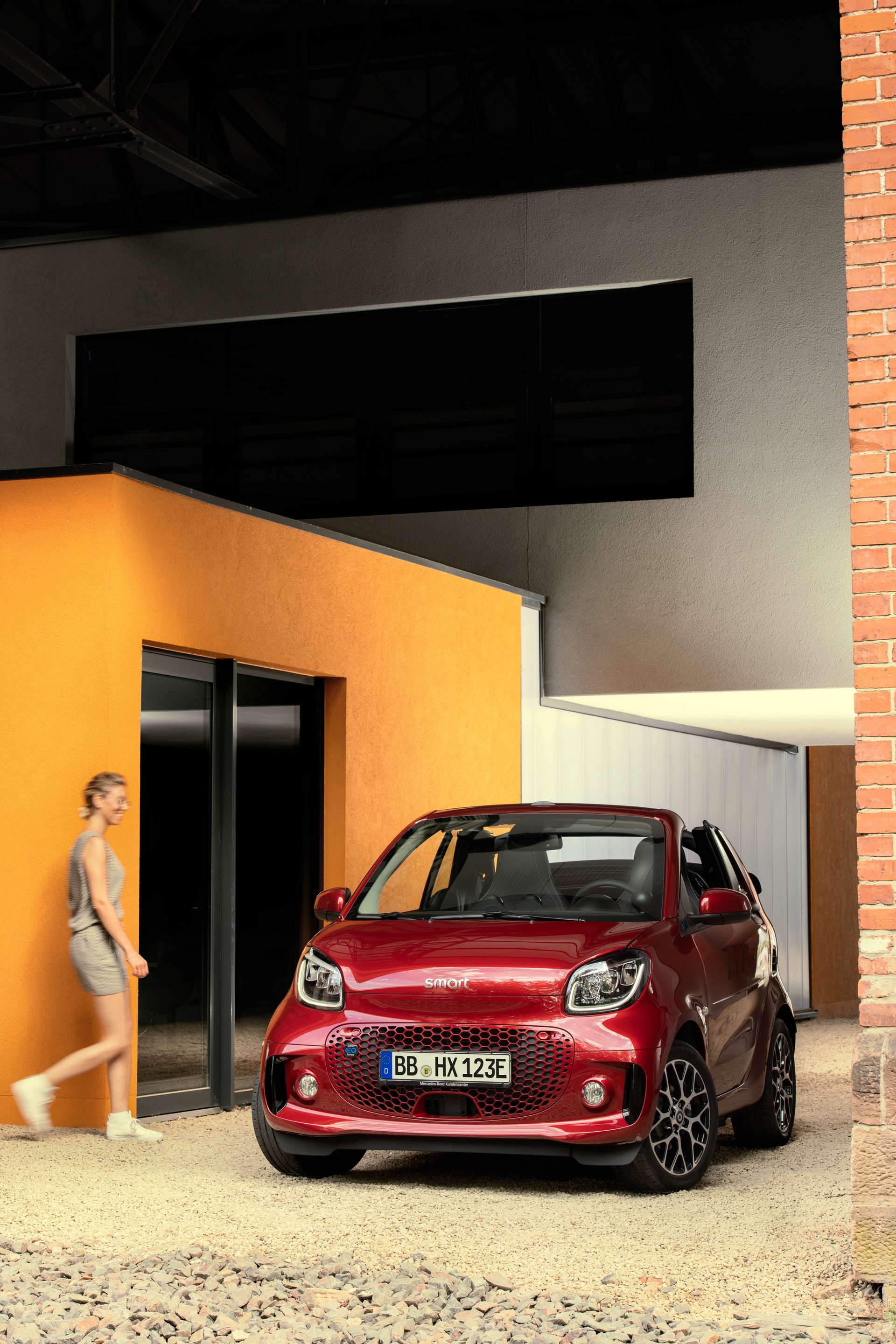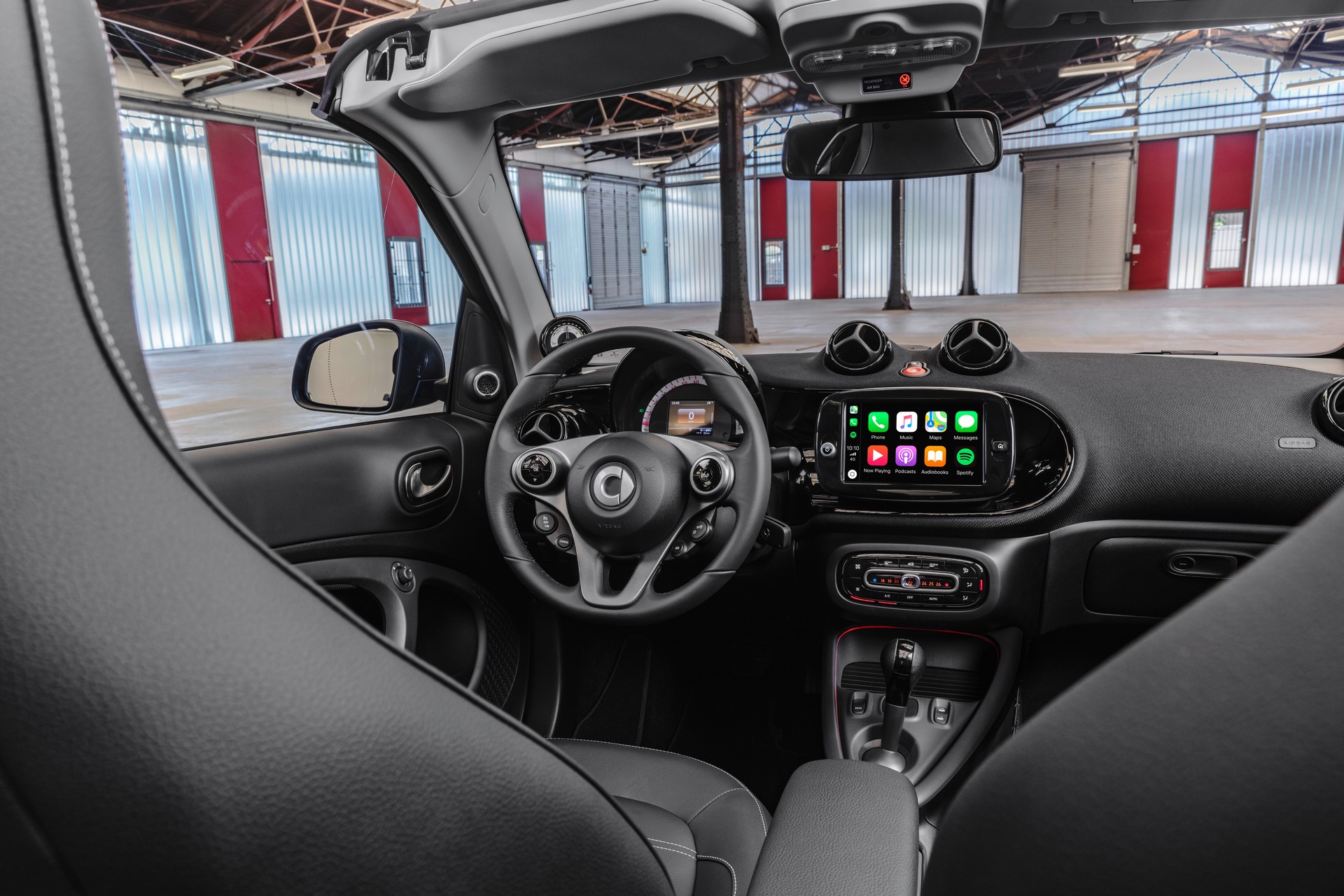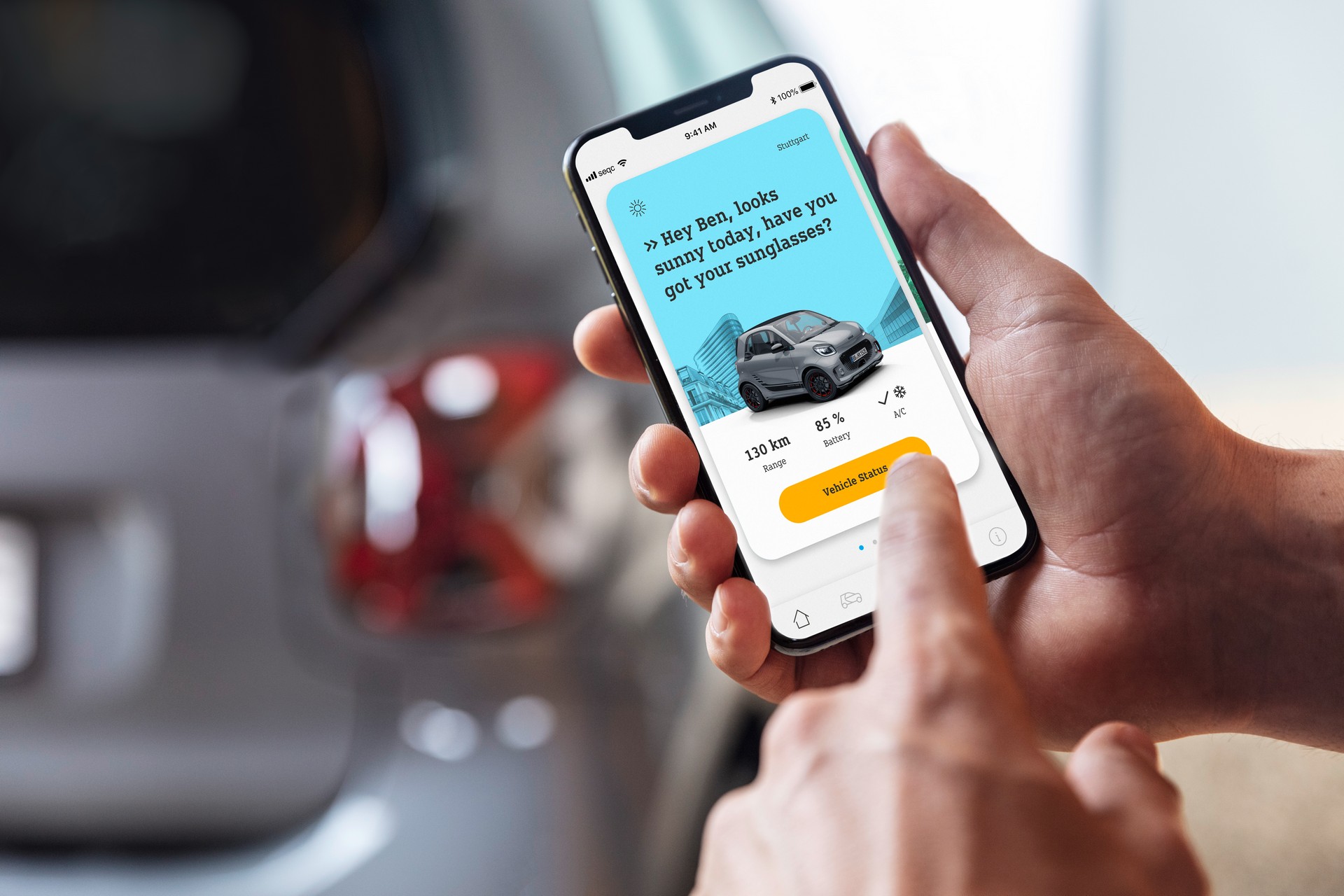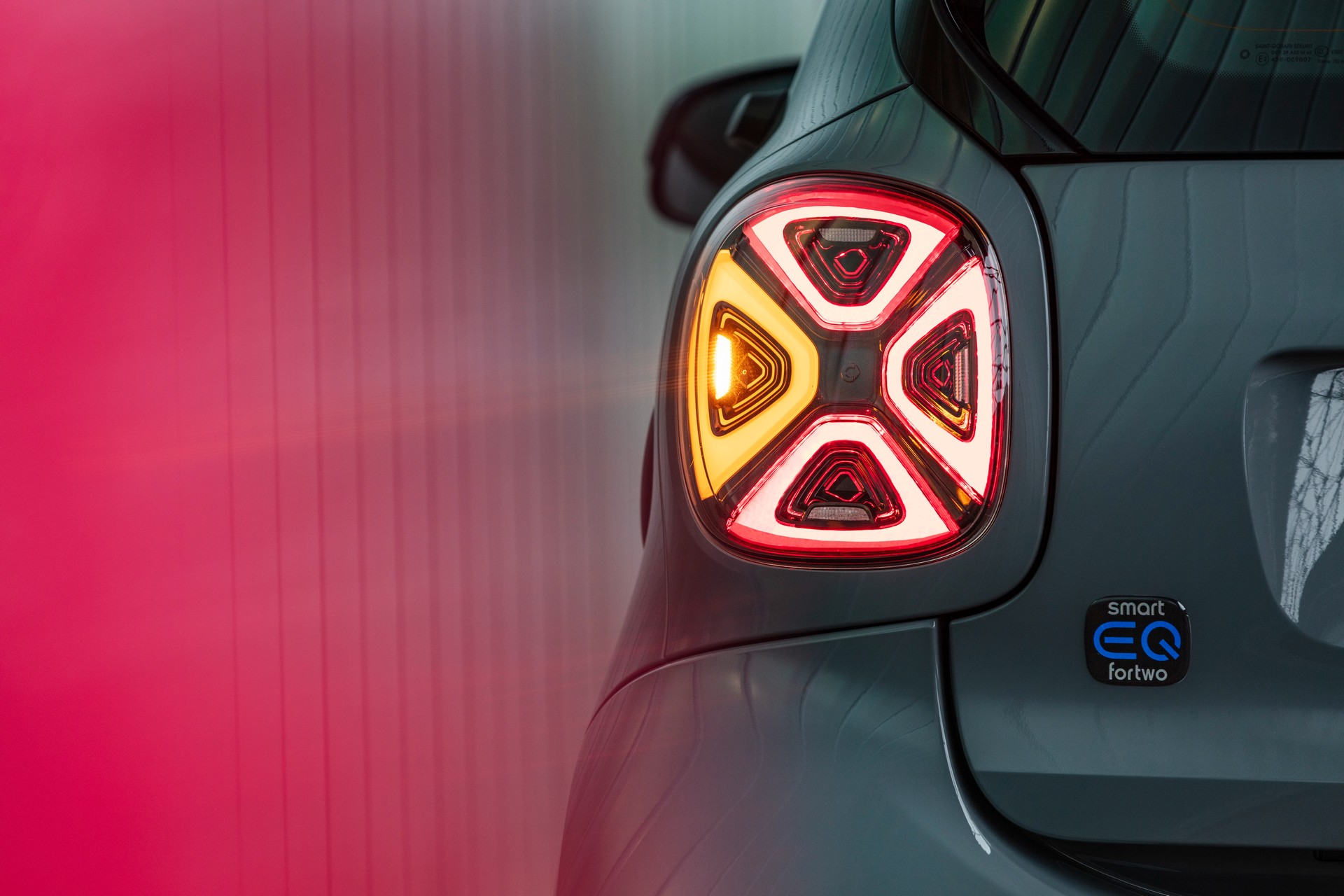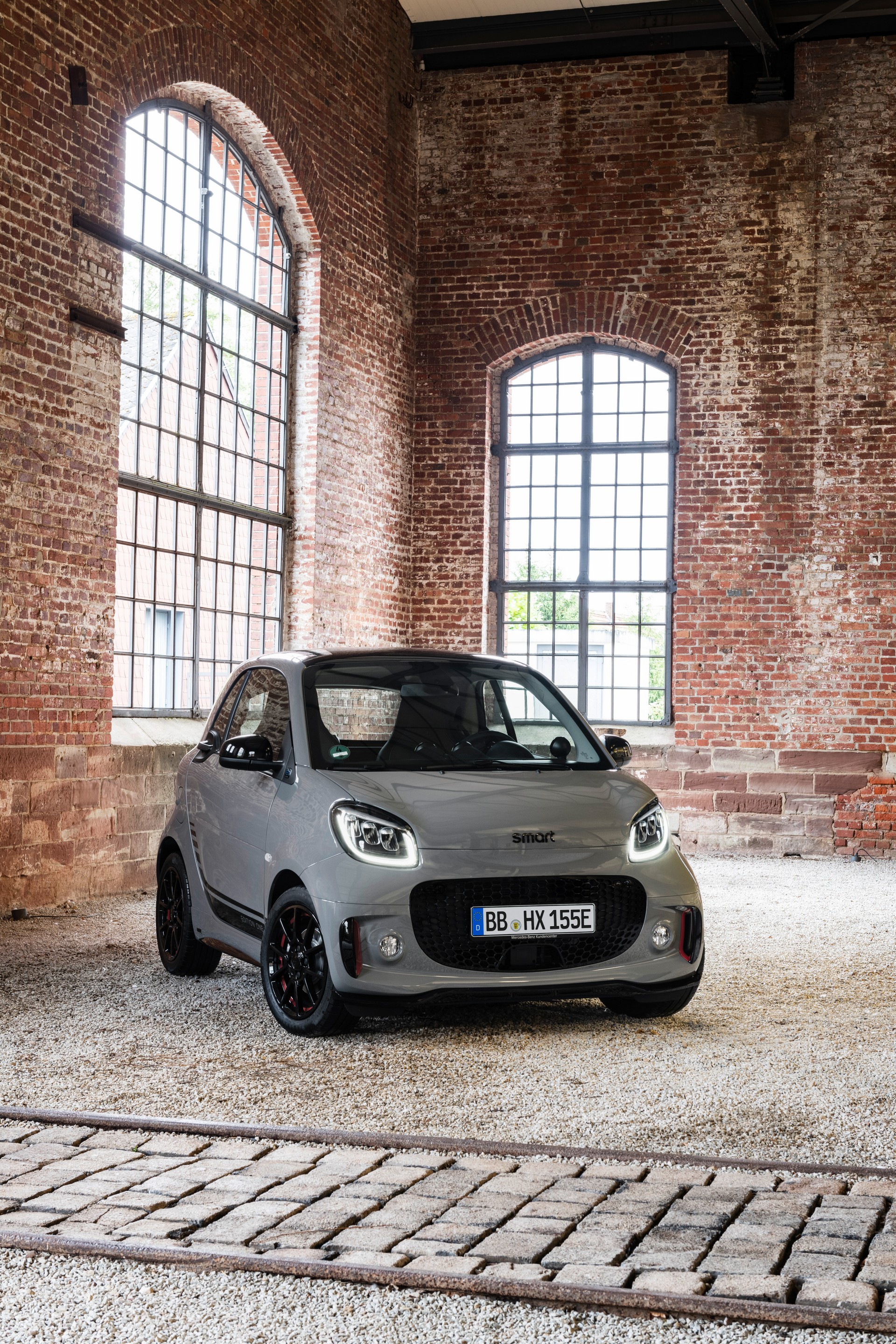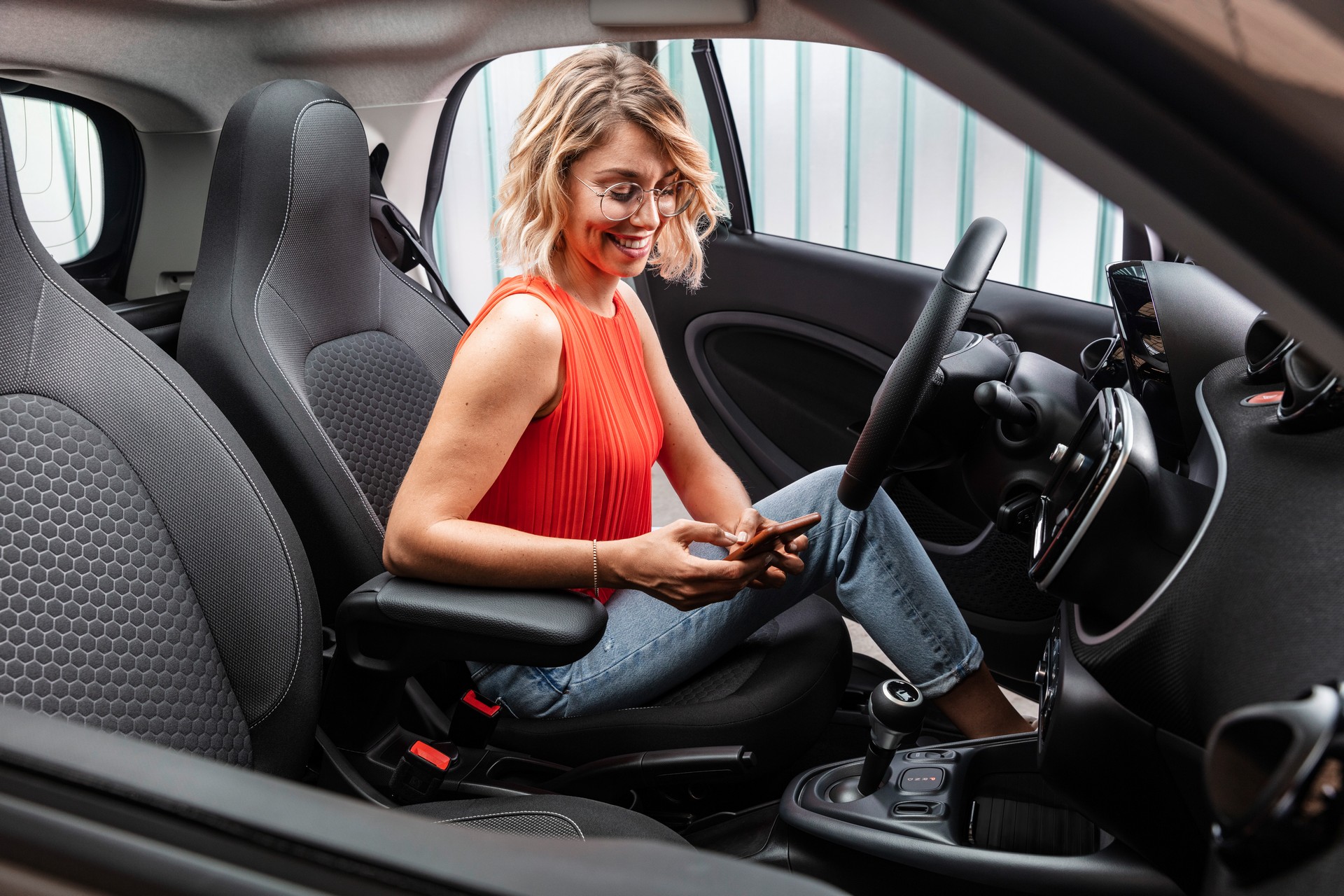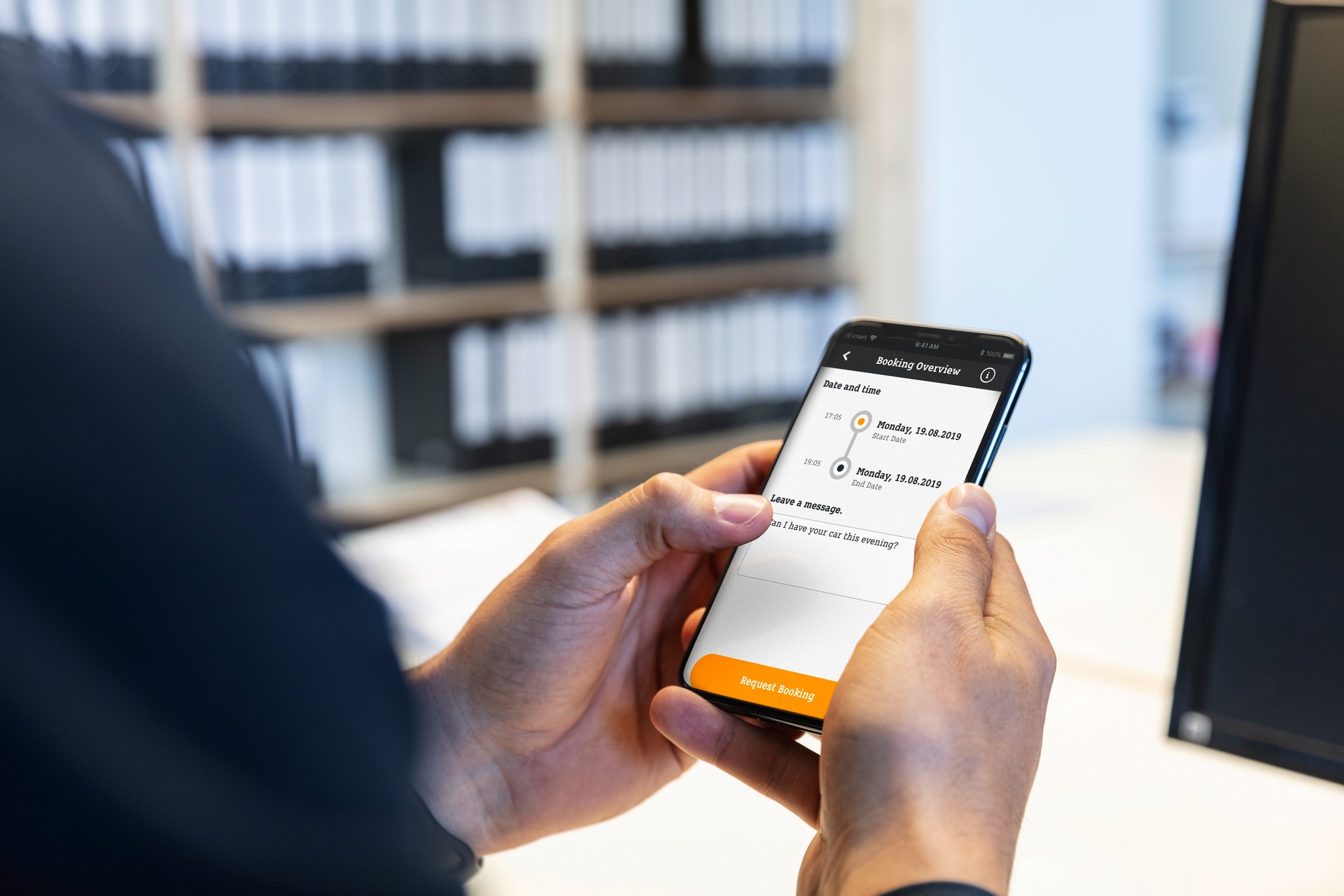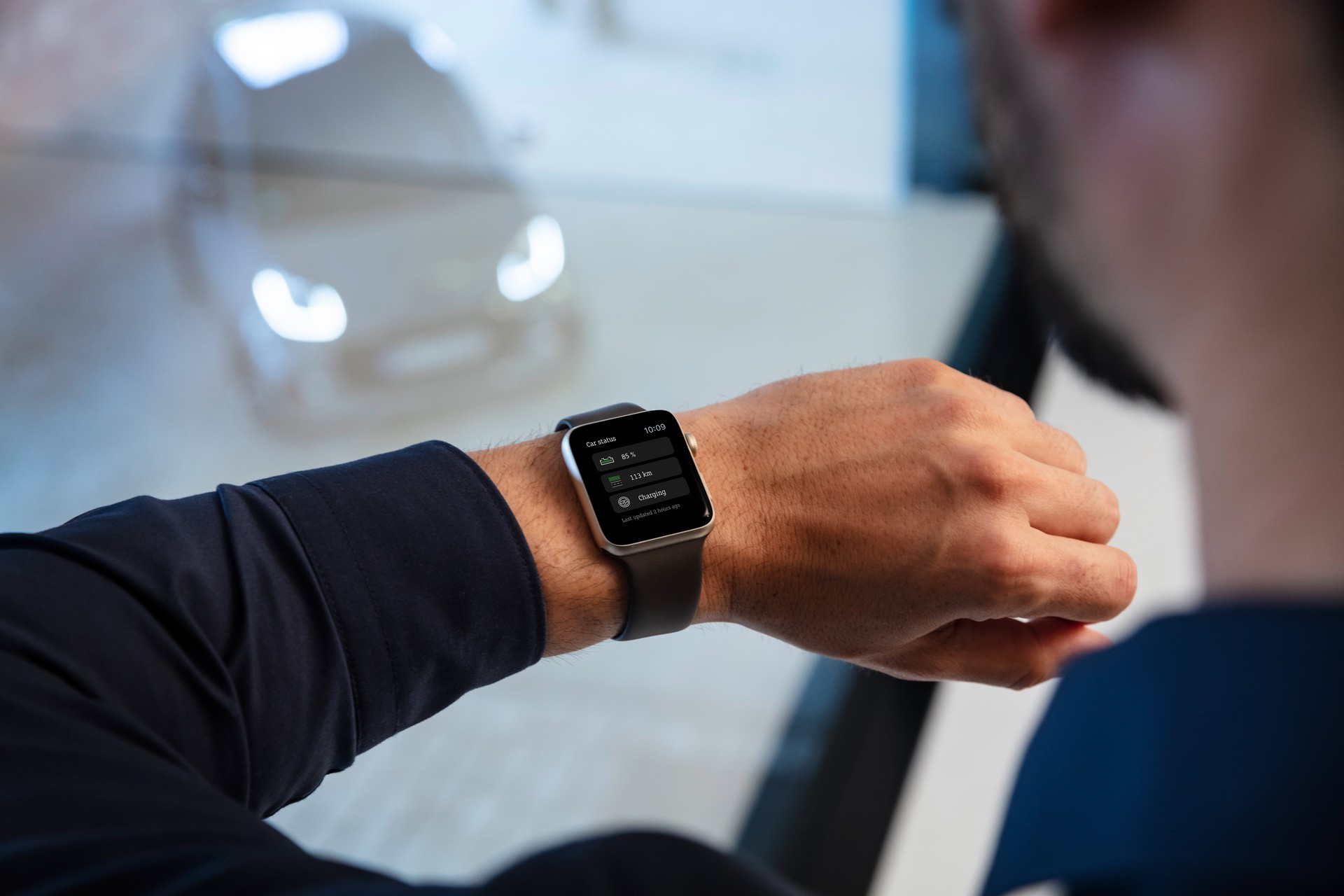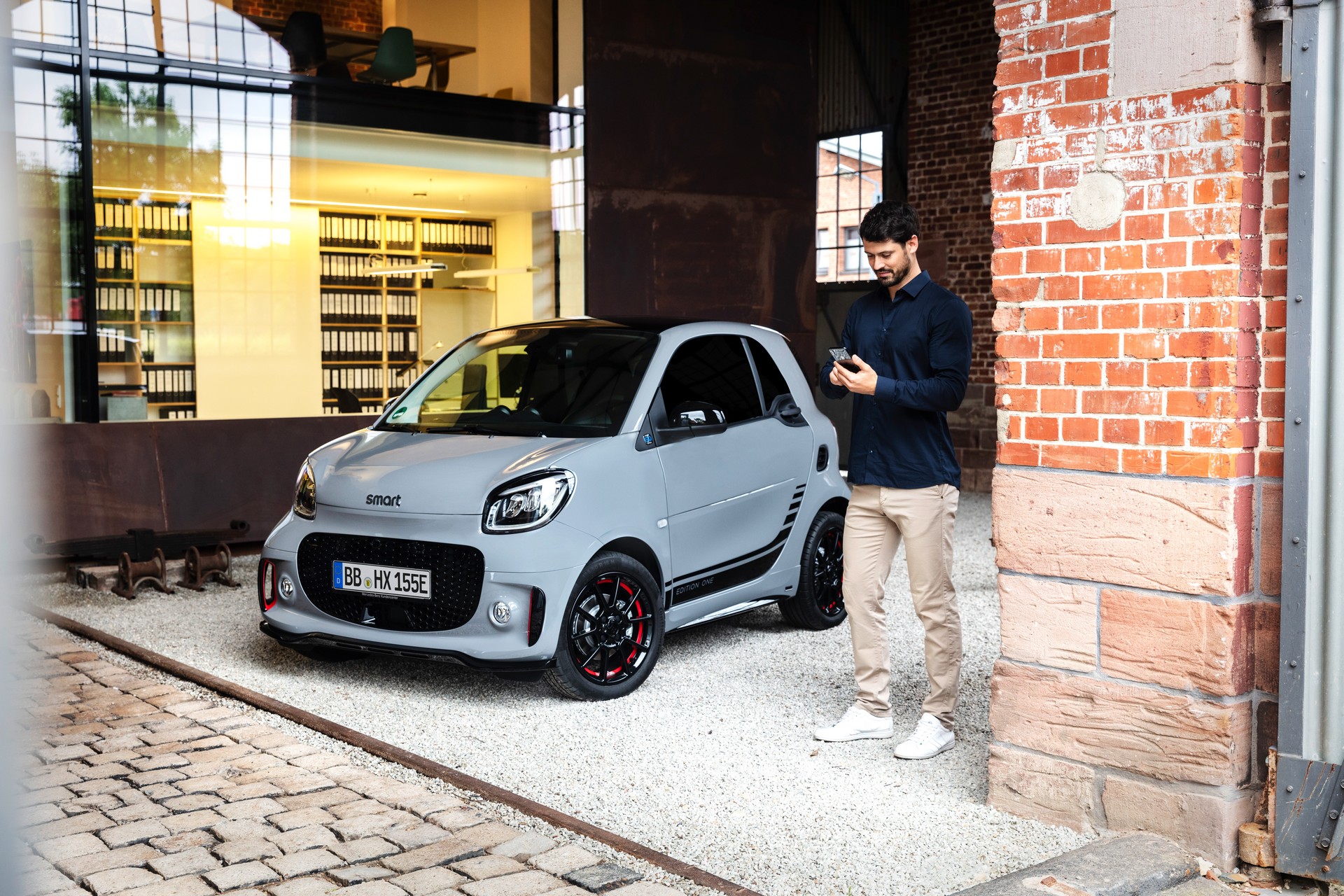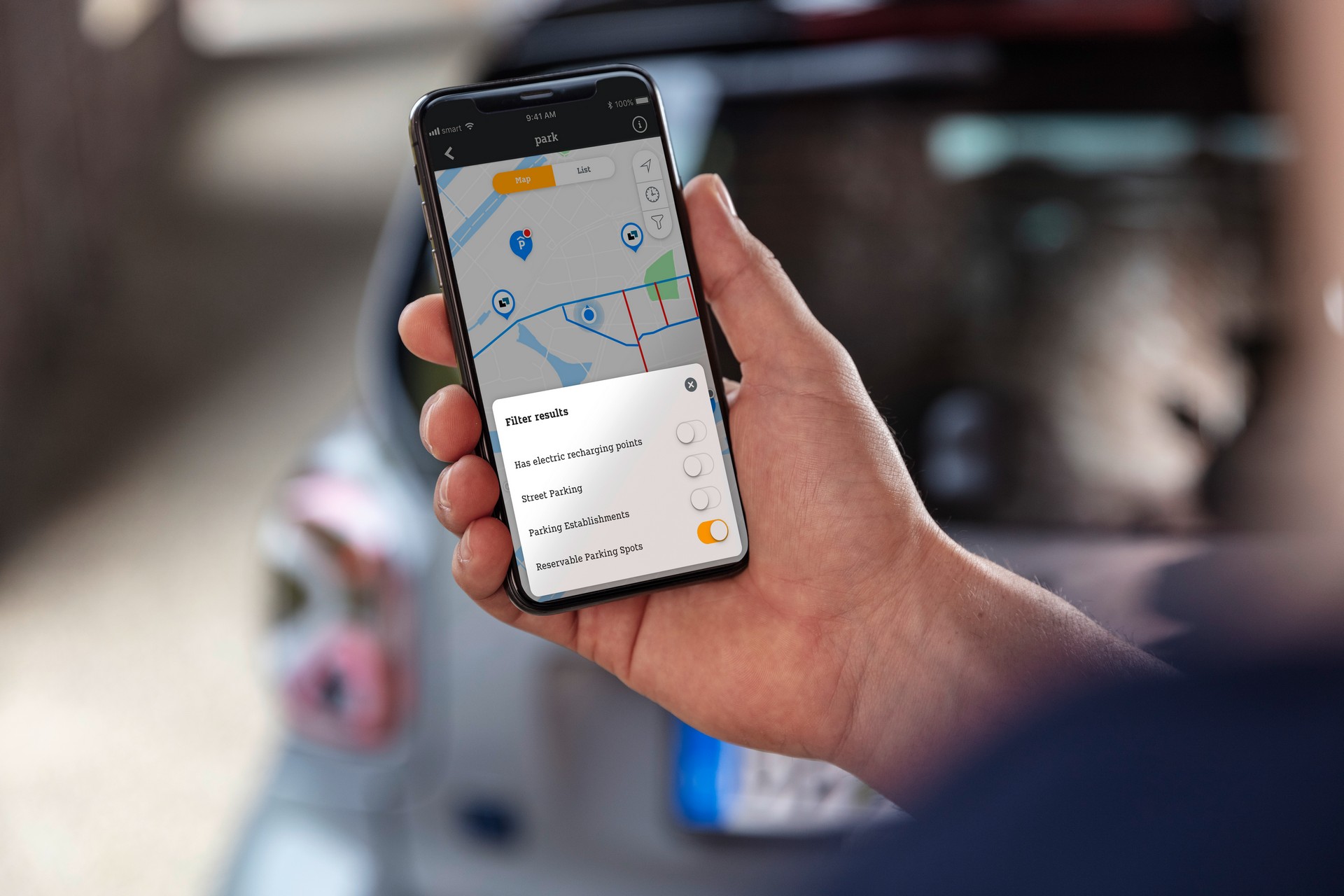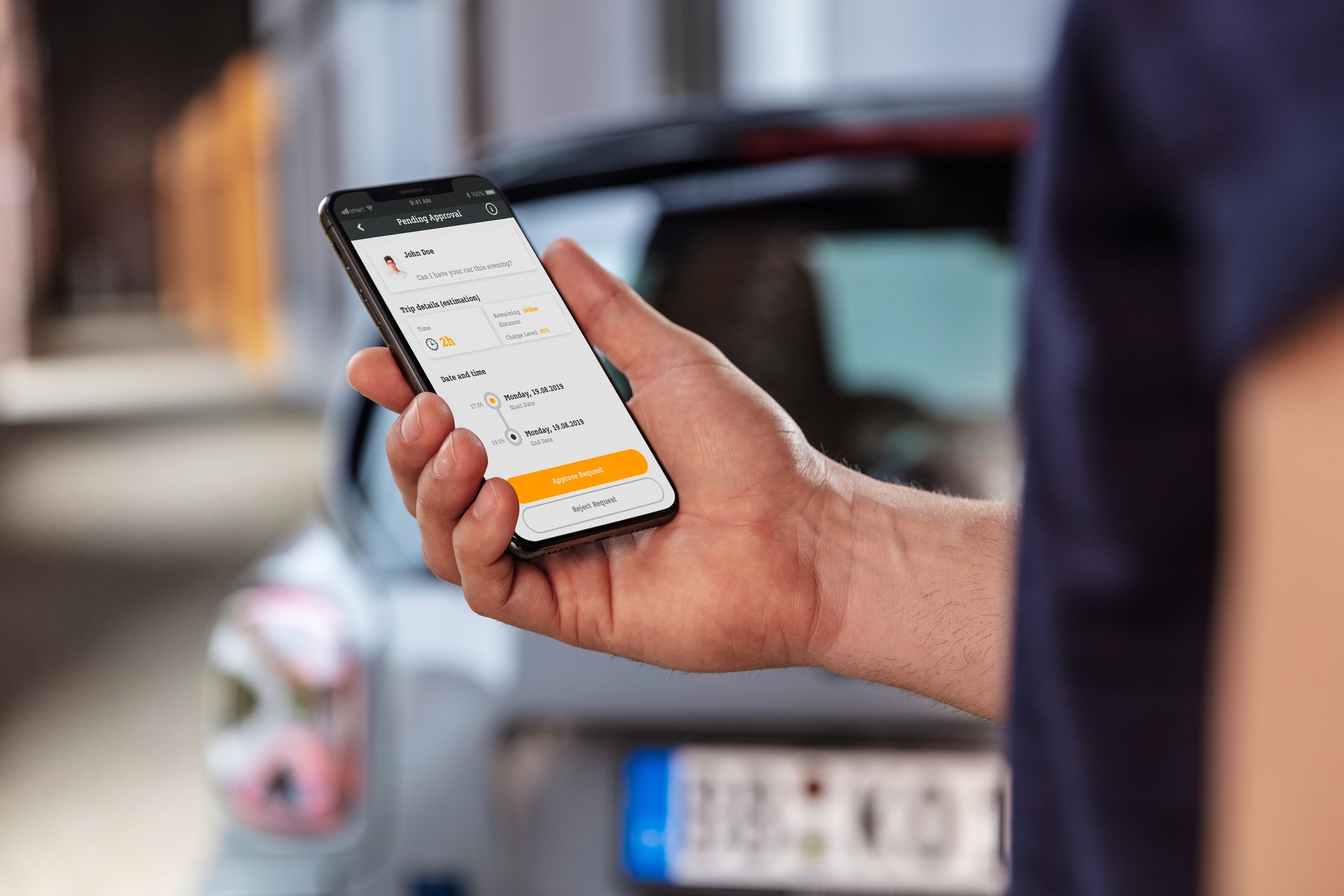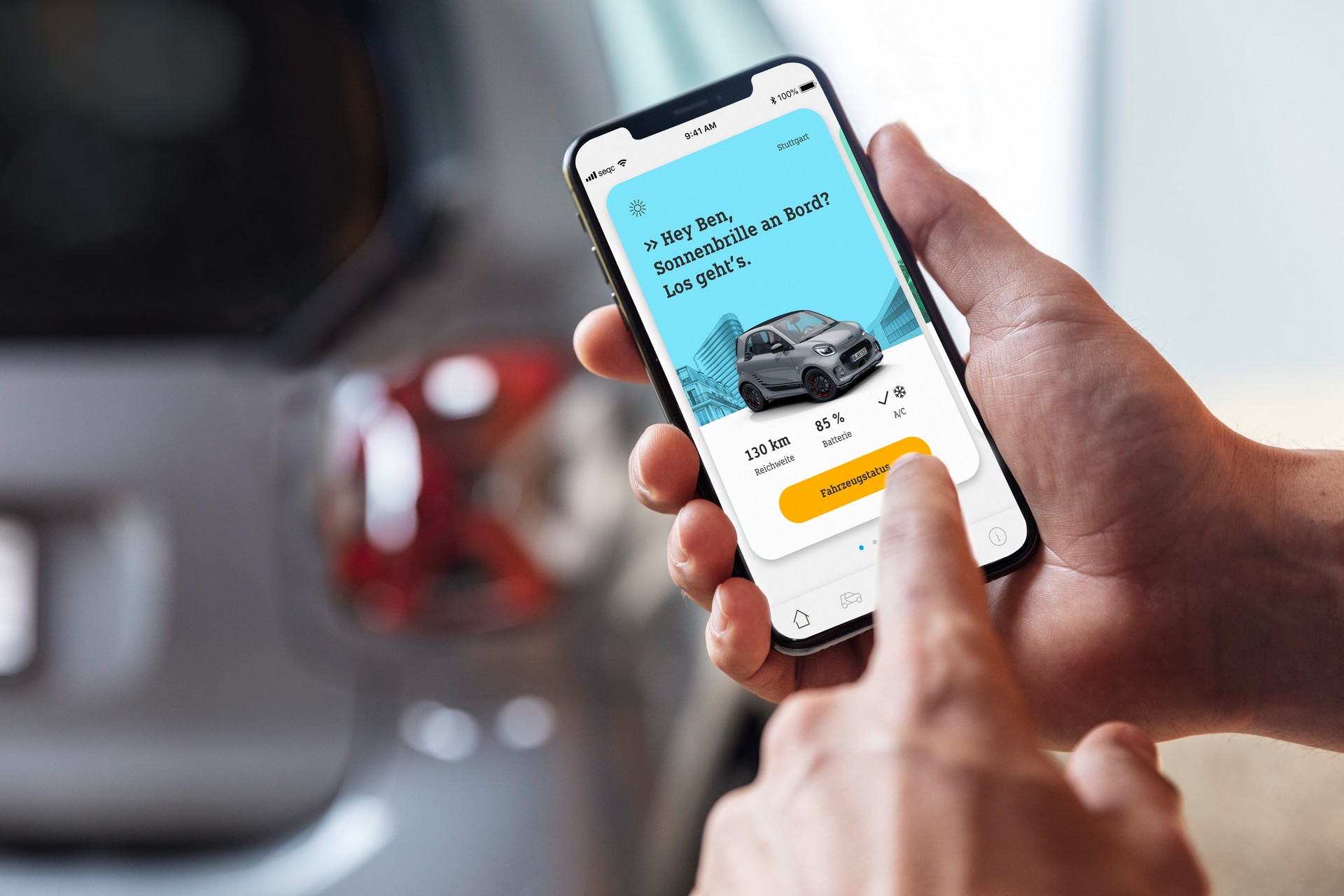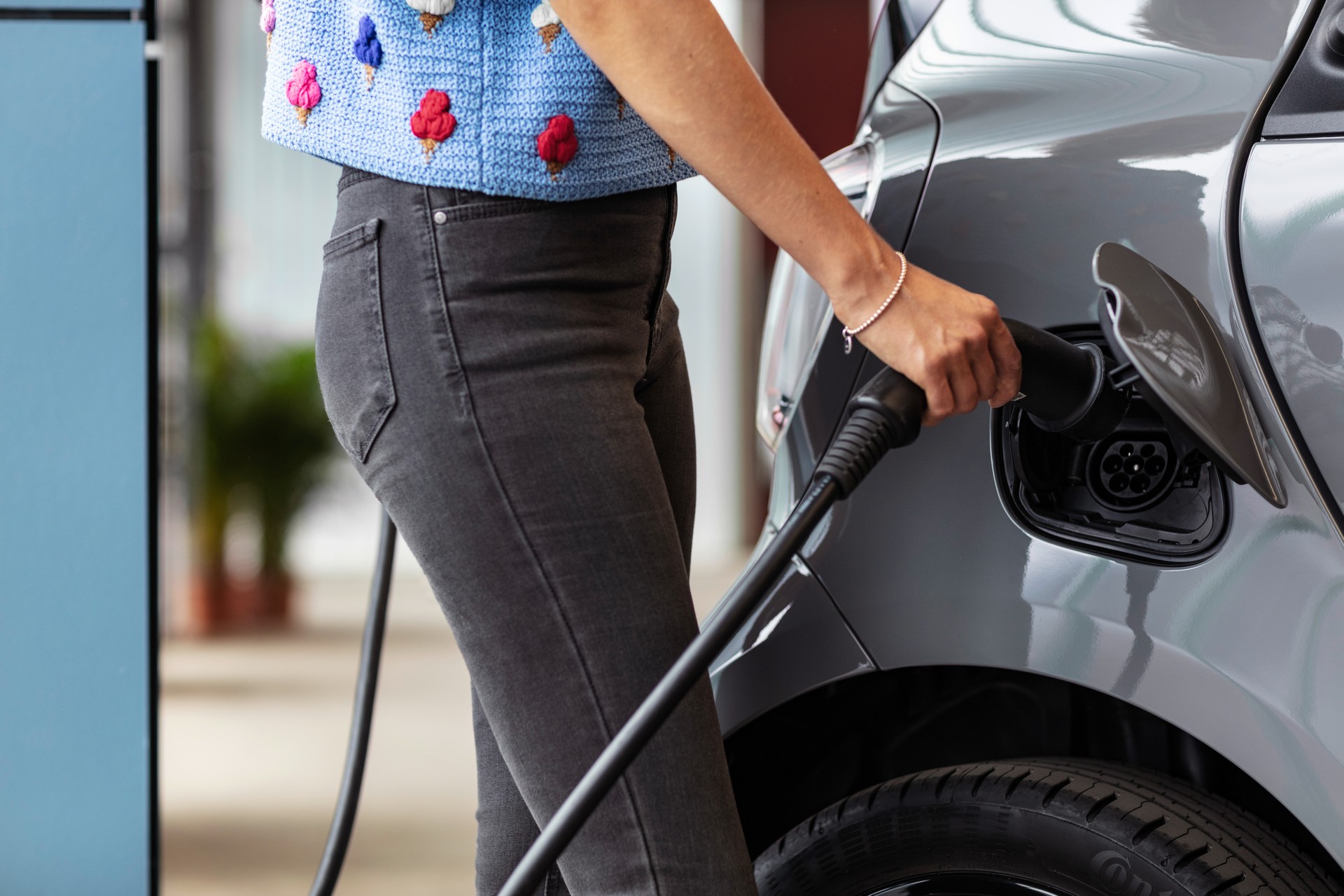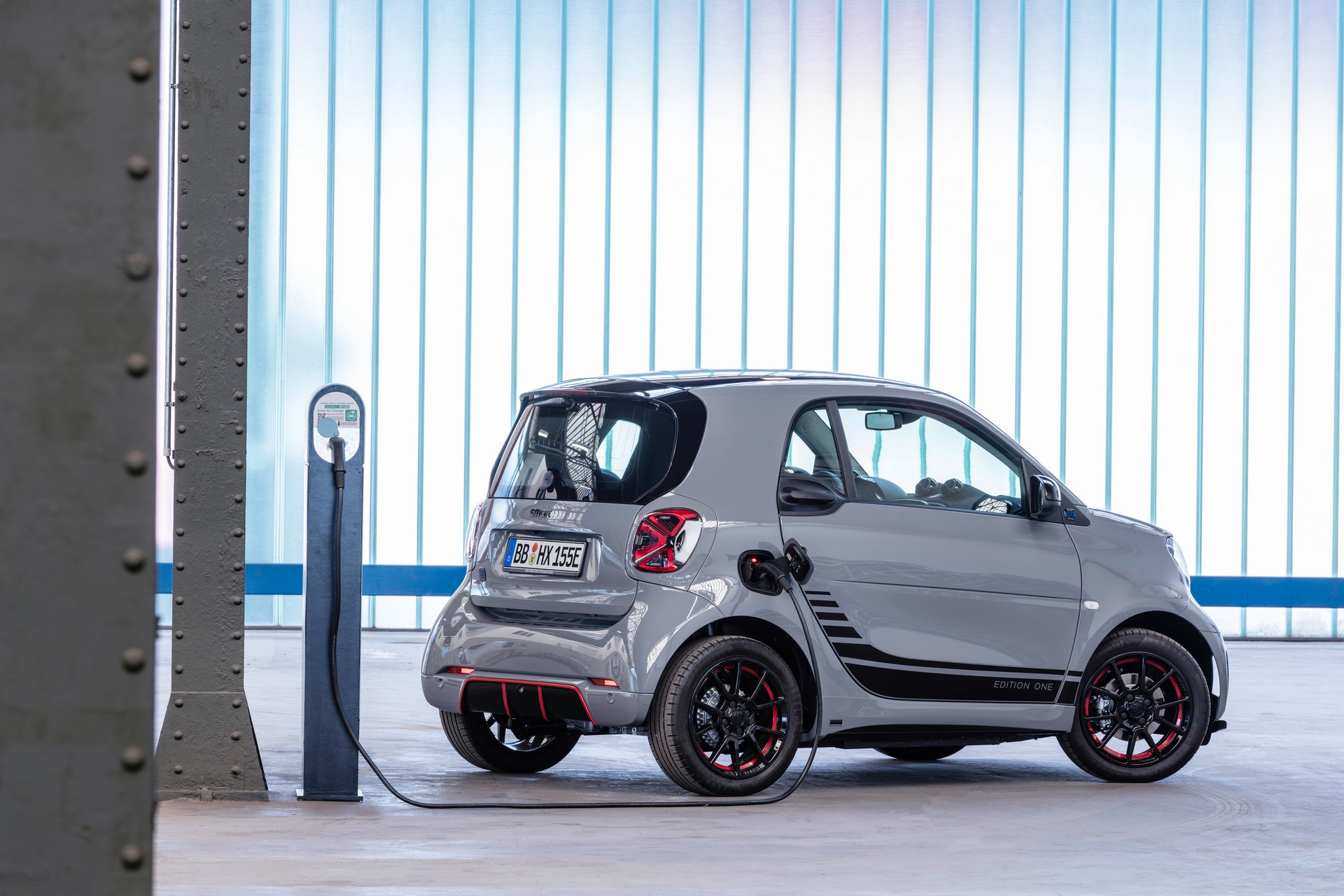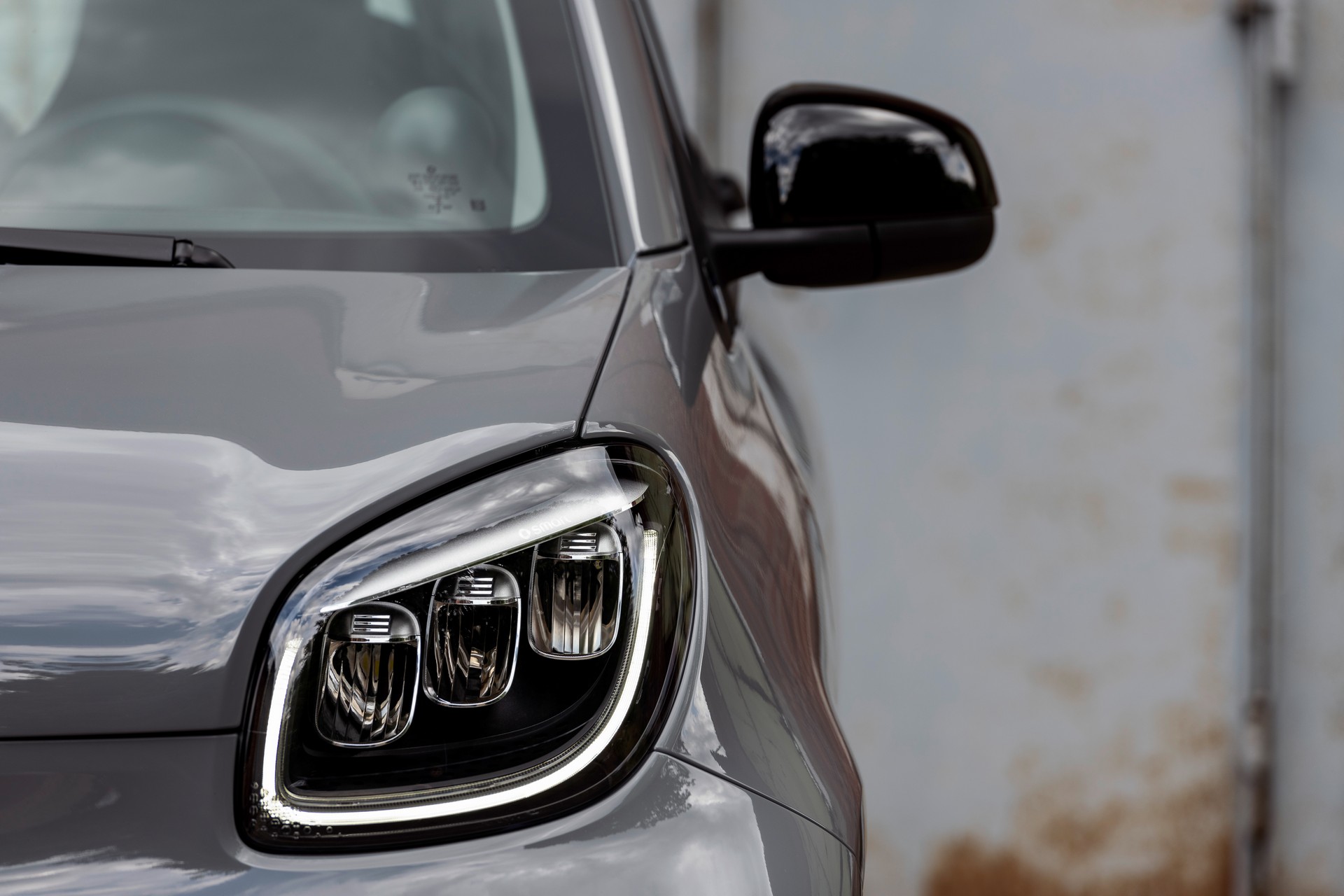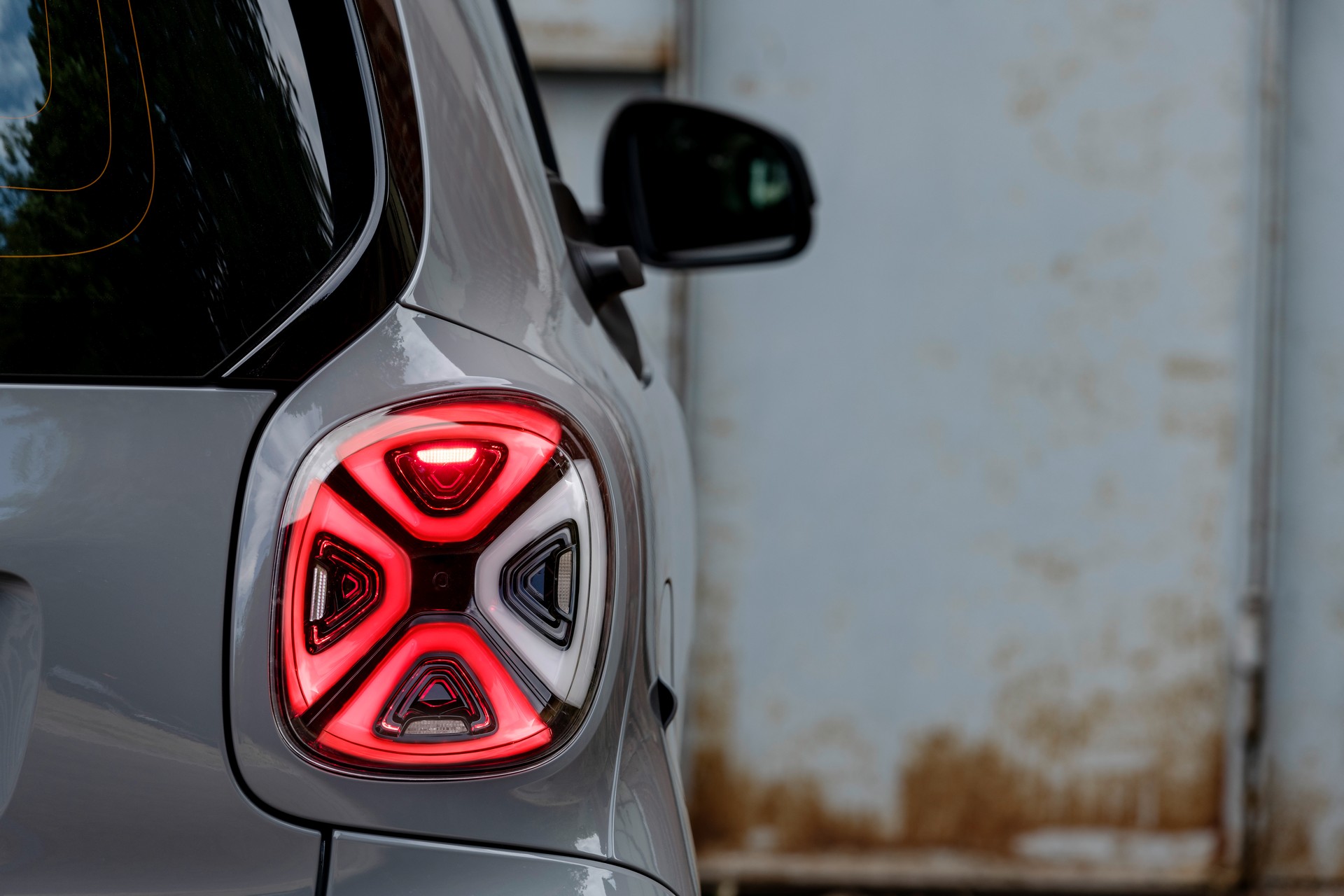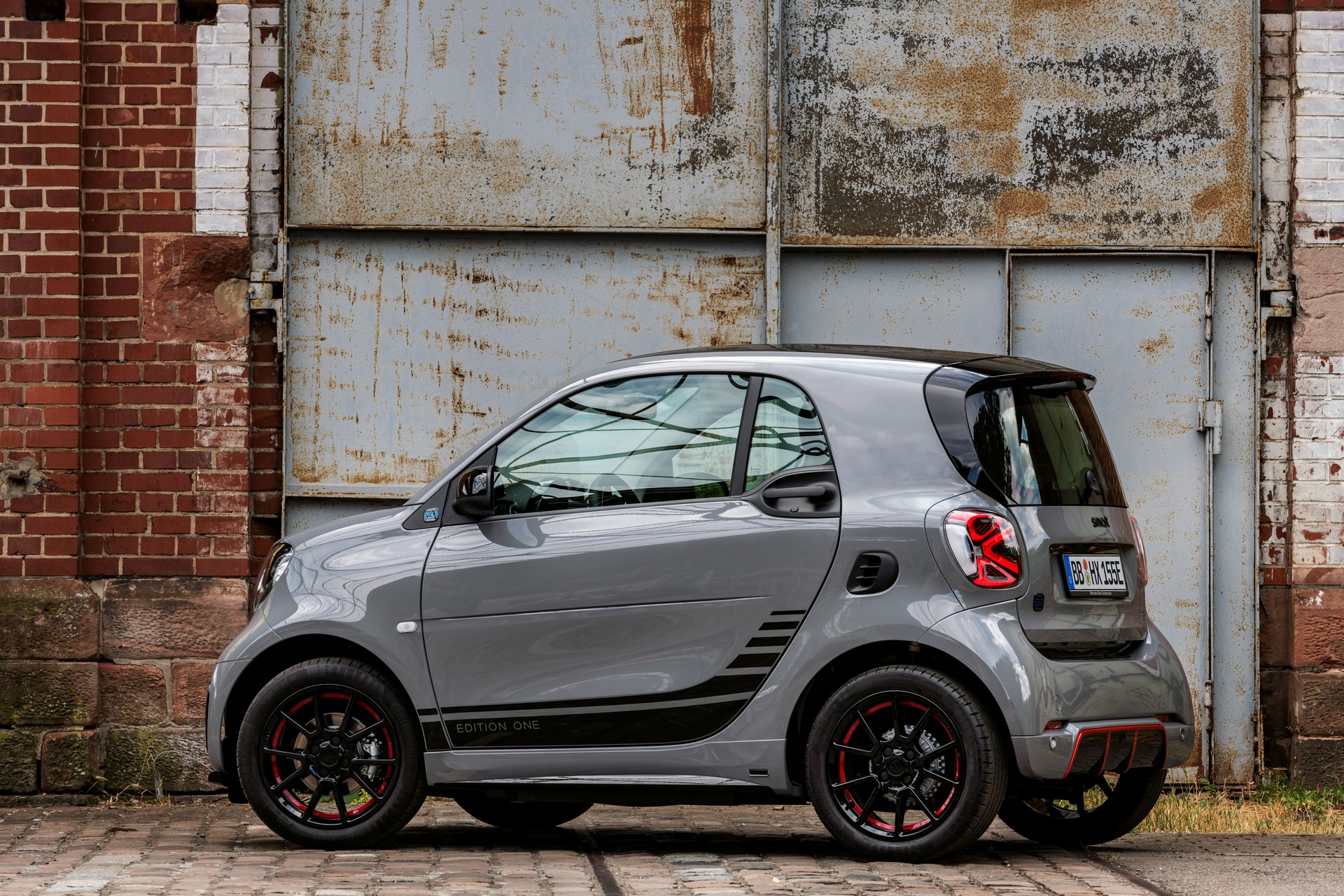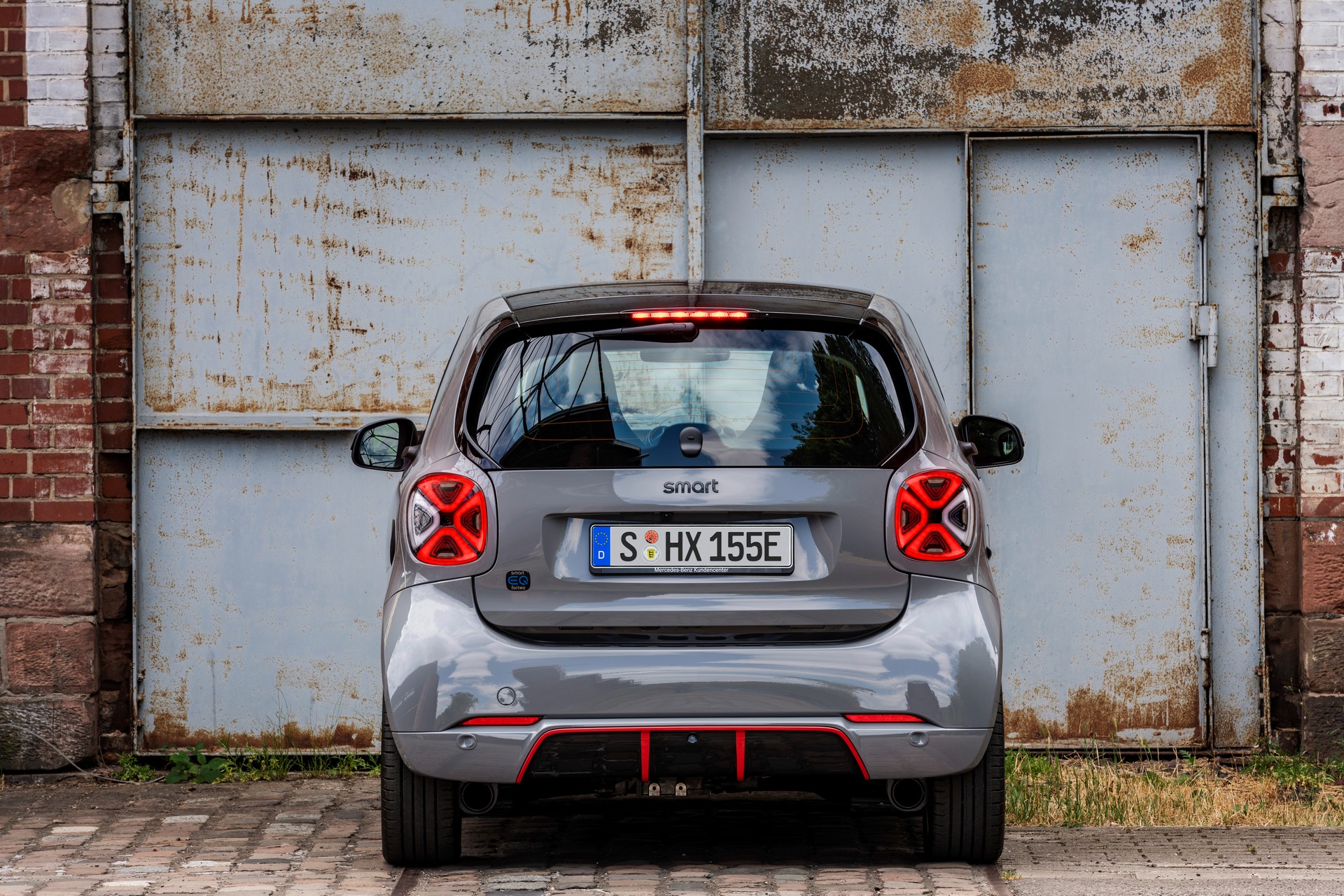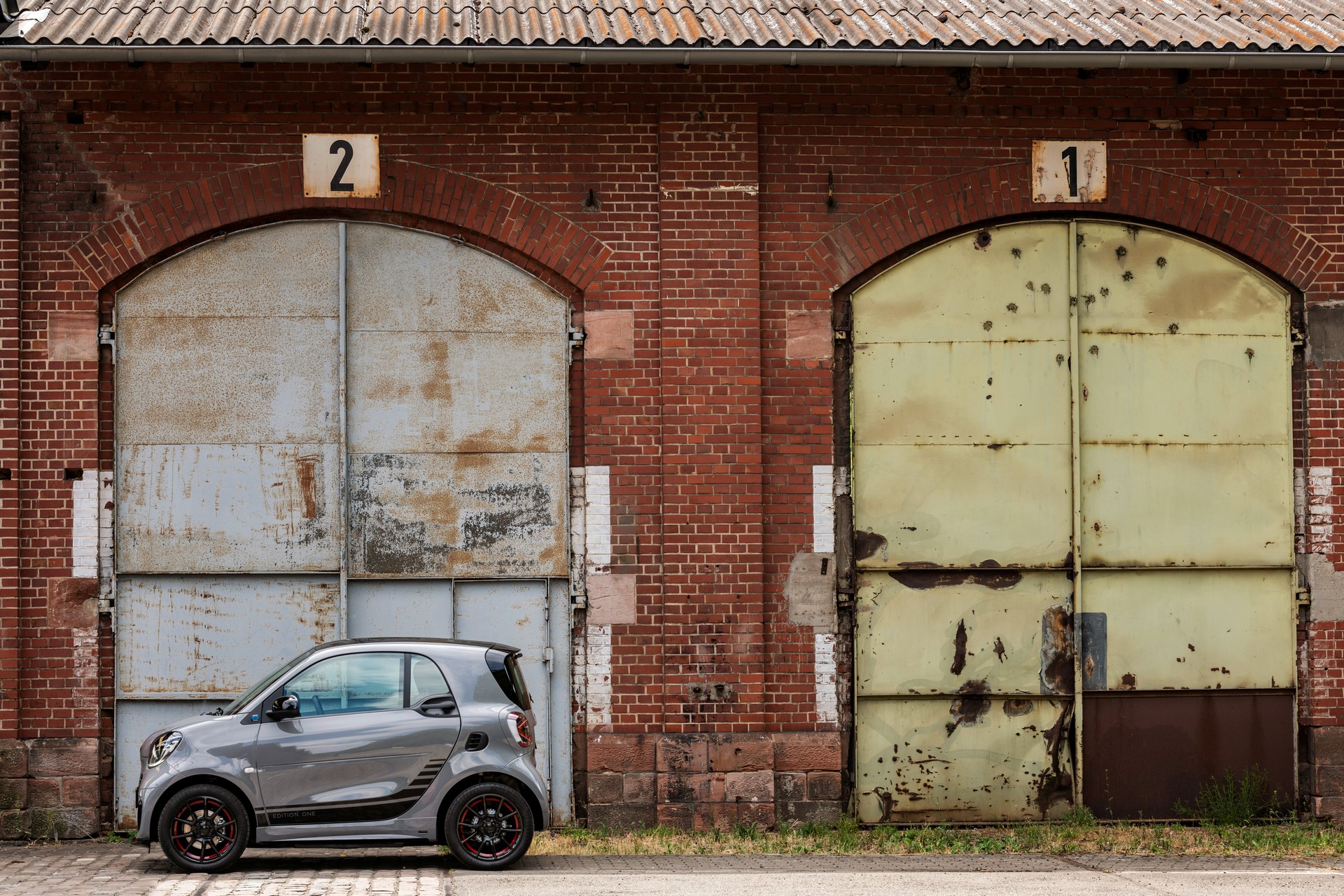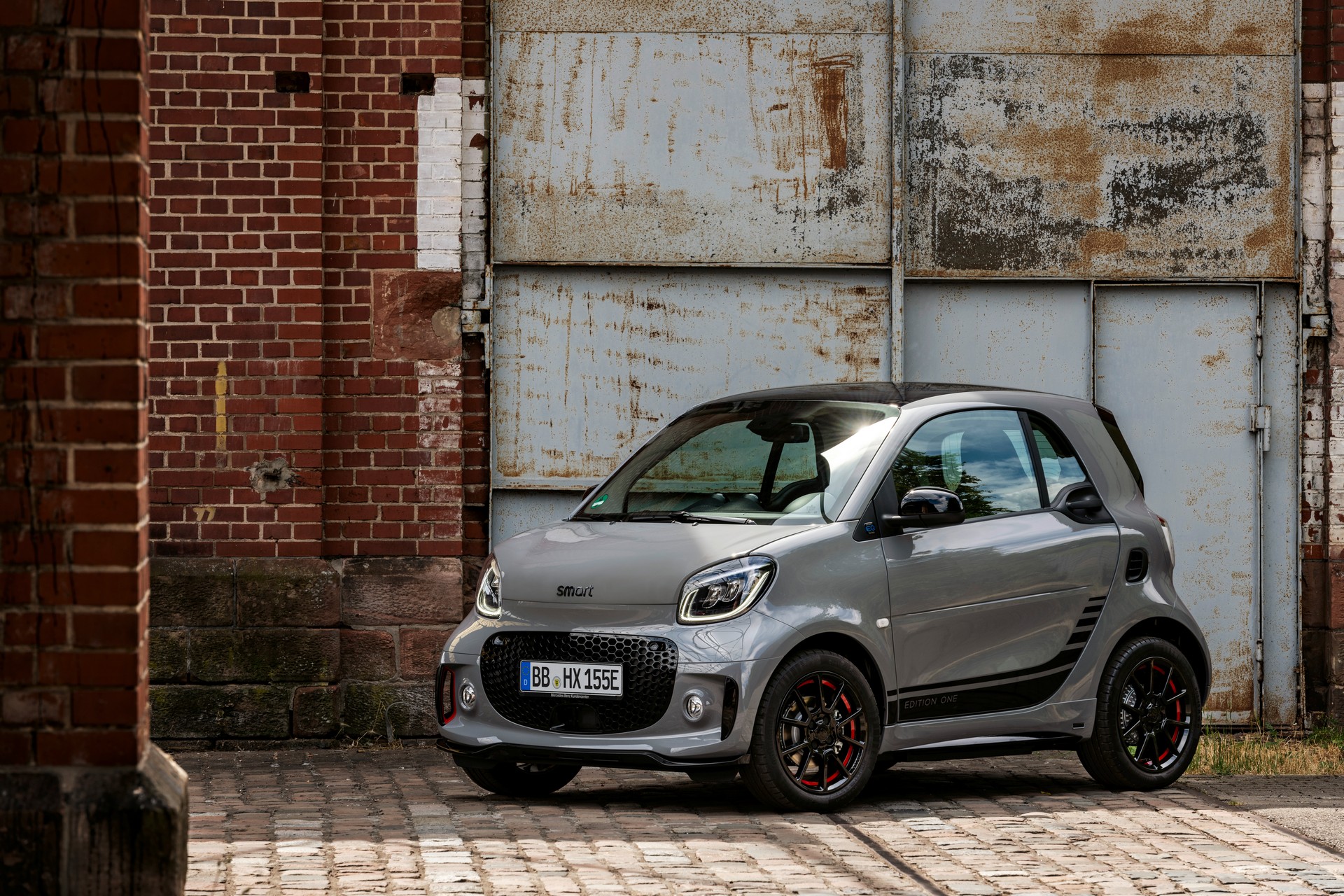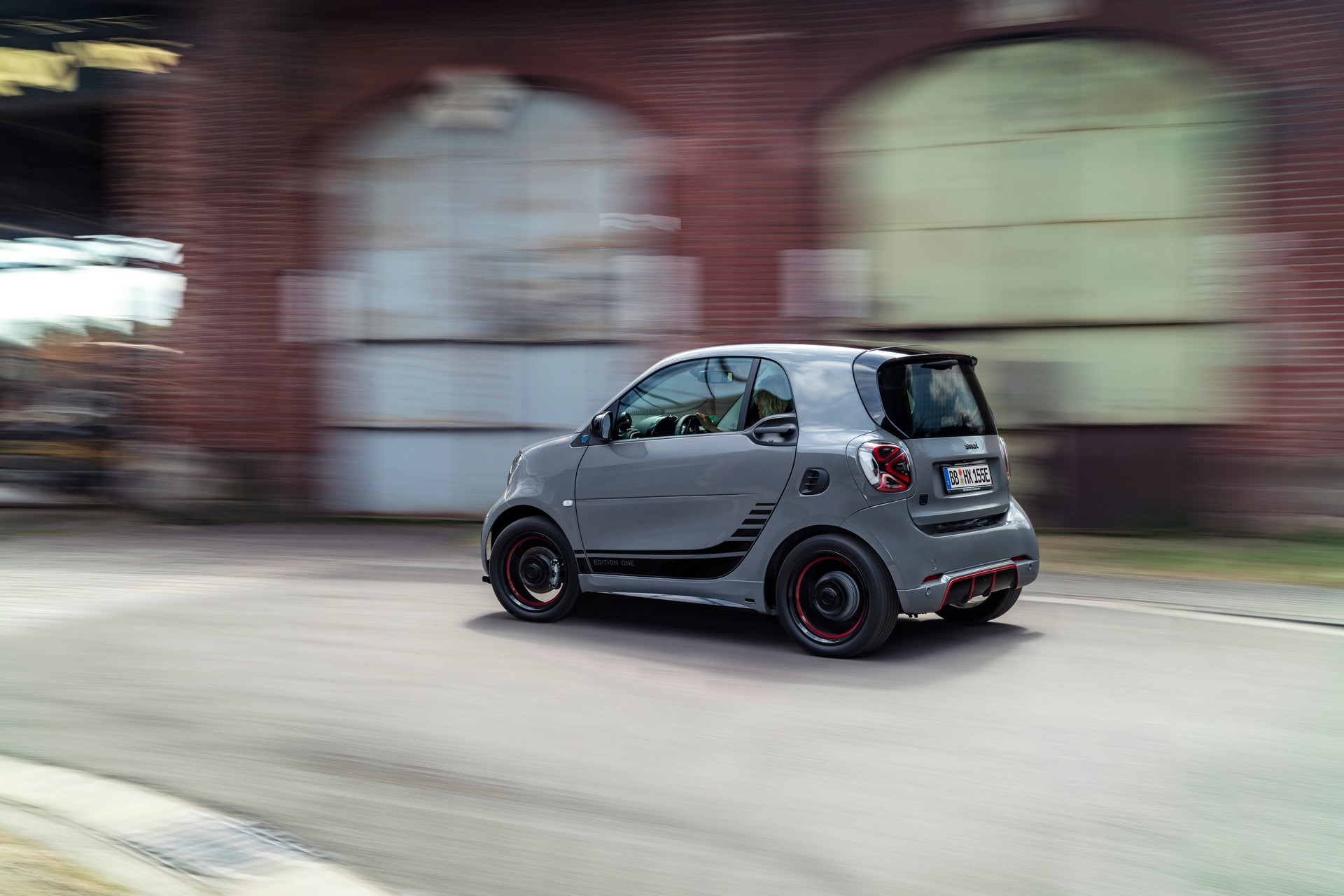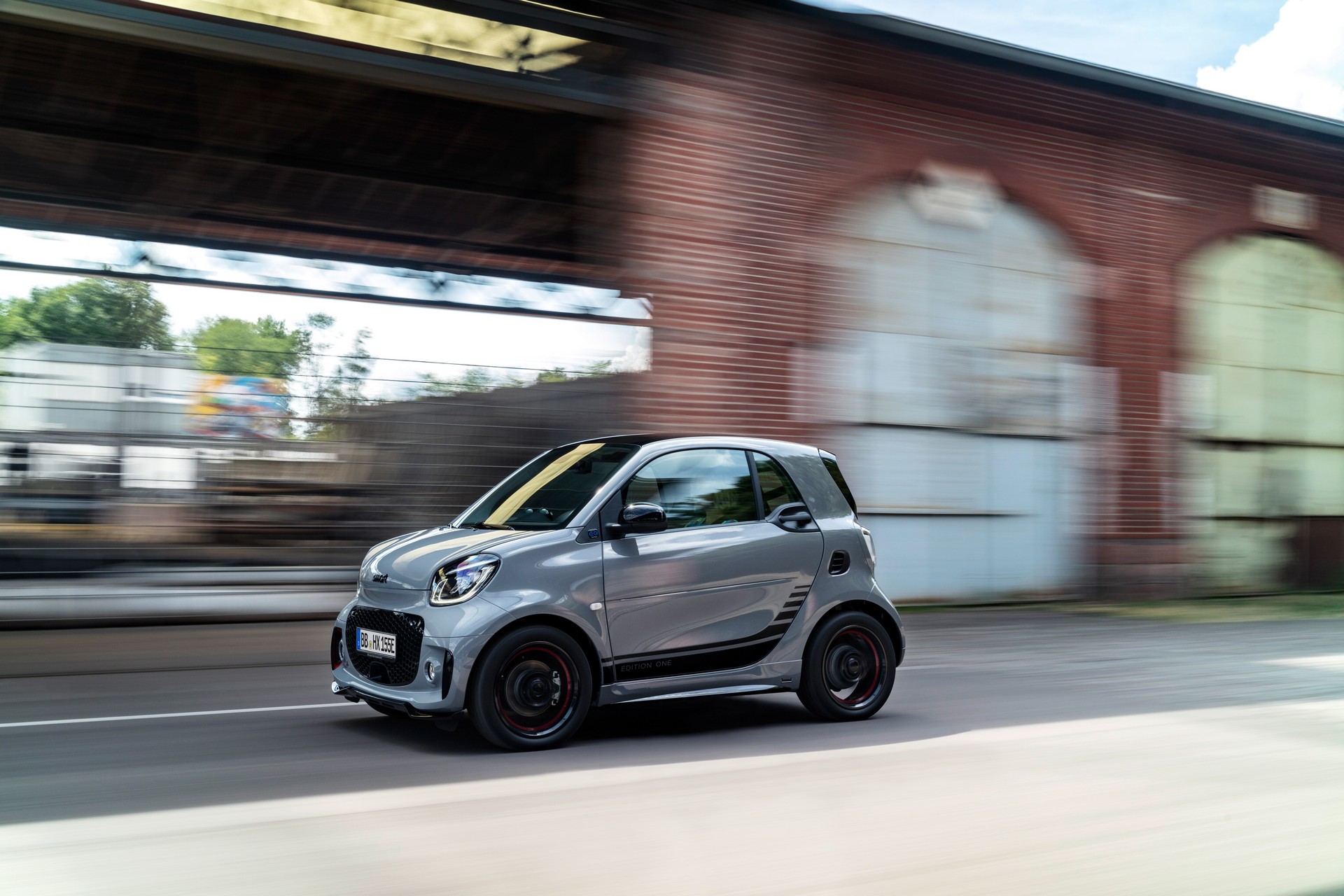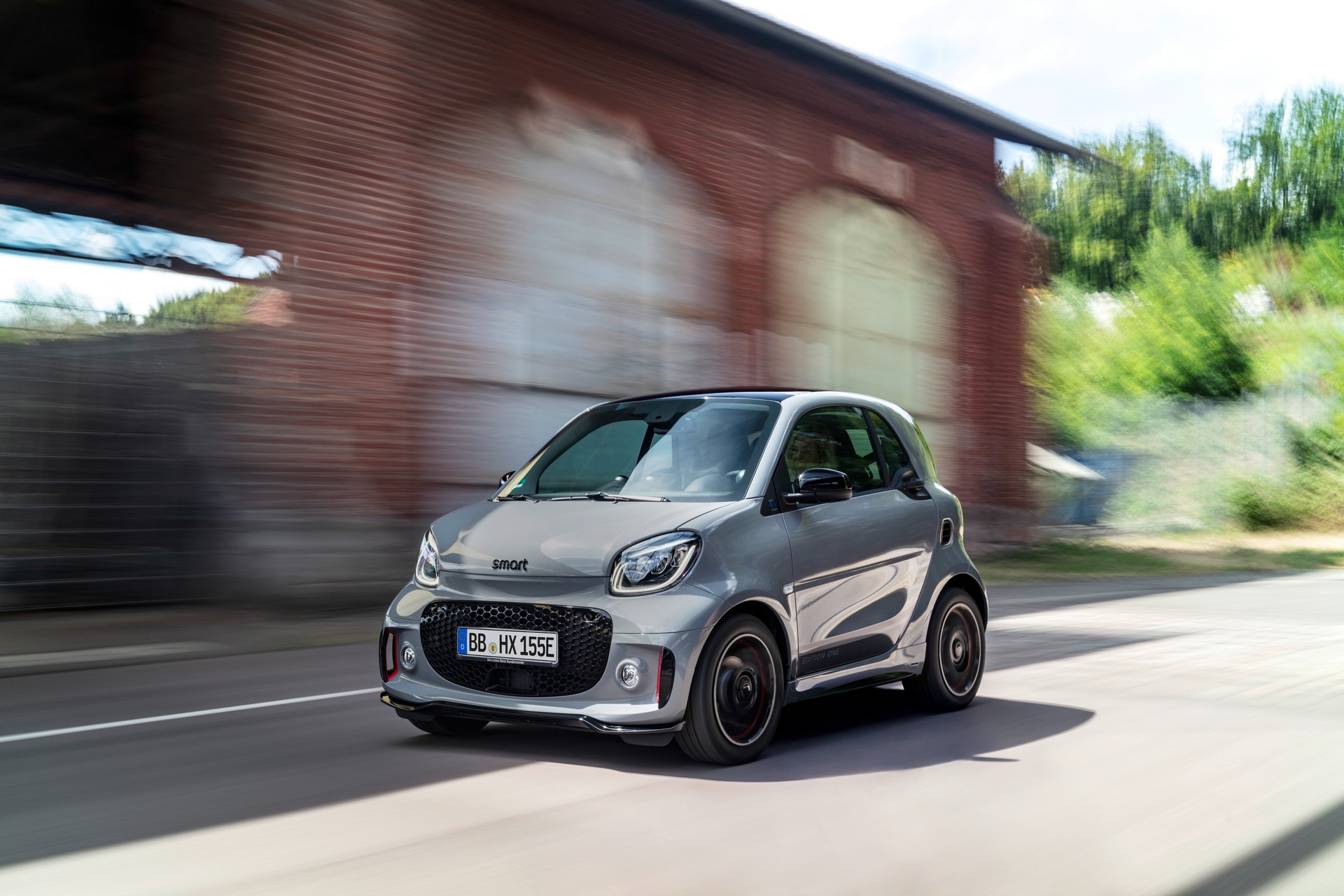Following a preview last week, Smart has unveiled the facelifted EQ ForTwo and EQ ForFour.
Set to debut at the Frankfurt Motor Show on September 10th, the models have a revised design that incorporates a number of styling cues from the ForEase and ForEase+ concepts.
Starting up front, the cars have been equipped with a new fascia that features a prominent mesh grille. It’s flanked by newly optional LED headlights and a modified bumper with vertical openings near the outside edges. Additional changes are limited, but the cars have updated taillights with a rhombic design that consists of “hundreds of elaborately arranged” LEDs.
The cabin largely carries over, but there are a handful of notable changes. First and foremost, there’s a new 8-inch infotainment system which promises a “seamless interaction” with a driver’s smartphone. The infotainment system is also more intuitive and easier to use.
Designers also created a new center console which features a large storage compartment in front of the shifter. Smart says its big enough to hold modern smartphones and can also accommodate two coffee cups thanks to its removable cup holder.
The changes should largely be welcomed, but Smart failed to address the biggest problem – the powertrain. It carries over and consists of a 17.6 kWh lithium-ion battery that powers an electric motor which develops 80 hp (60 kW / 82 PS) and 118 lb-ft (160 Nm) of torque.
Also Read: Smart To Withdraw From US And Canada Following Massive Sales Decline
Smart didn’t release detailed performance specifications, but confirmed the car has a disappointing range of up to 98.8 miles (159 km) in the New European Driving Cycle. The company was quick to point out the range is “several times the average daily” commute in Germany, but that probably won’t stop customers from having serve range anxiety.
It’s also worth mentioning the 98.8 mile (159 km) range is a best case scenario as pre-facelift ForFour could only travel between 85-96 miles (137-155 km) on a single charge. That’s on top of the old model’s 0-62 mph (0-100 km/h) time of 12.7 seconds.
Given the limited range, owners should expect to recharge their vehicle pretty often. On the bright side, the optional 22 kW on-board charger features a rapid-charging function which enables the battery to be charged from 10% to 80% in less than 40 minutes.
Without a rapid-charger, the process takes significantly longer. Smart didn’t say how long, but customers who use a 230V socket can expect to get the “average daily driving distance” in a little over three and a half hours.
The updates are pretty tame, but the clock is ticking on the current ForTwo and ForFour. Earlier this year, Daimler sold a 50% stake in Smart to Geely to form a new joint venture which will “own, operate and further develop” the brand. The next-generation of Smart vehicles is slated to arrive in 2022 and, judging by today’s facelift, they can’t get here soon enough.




